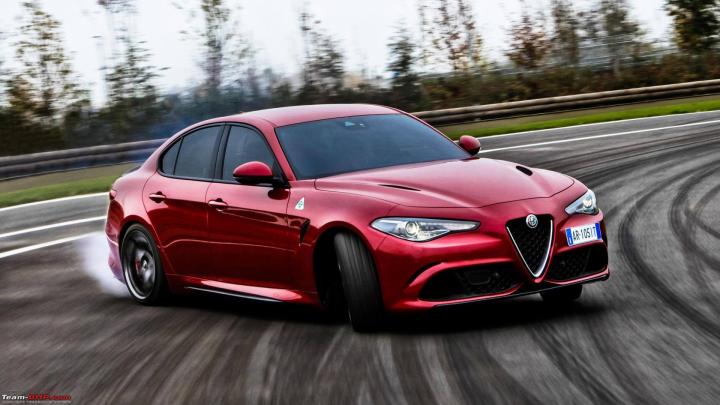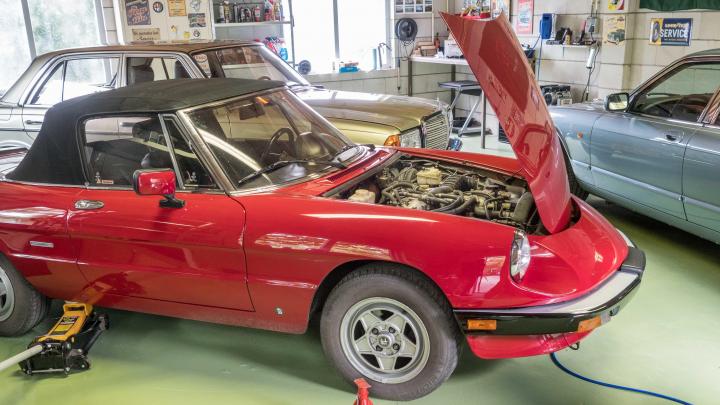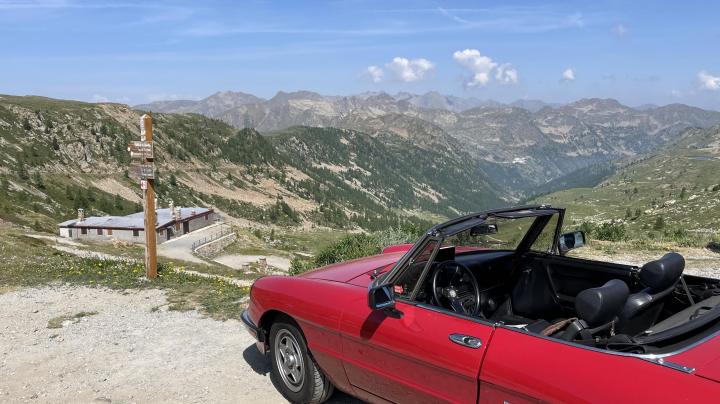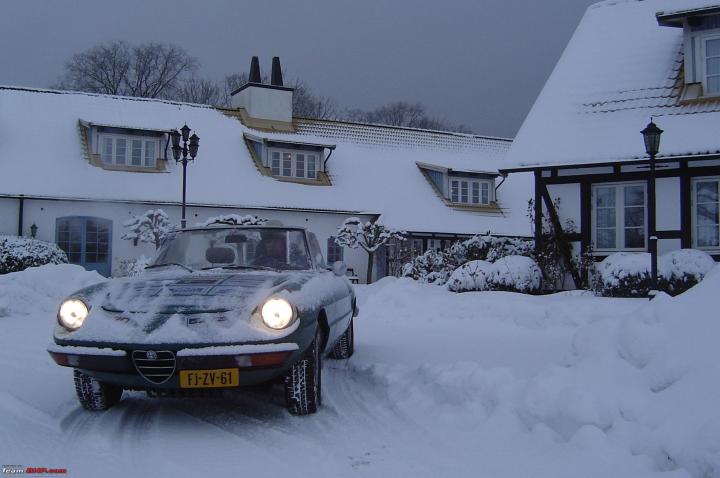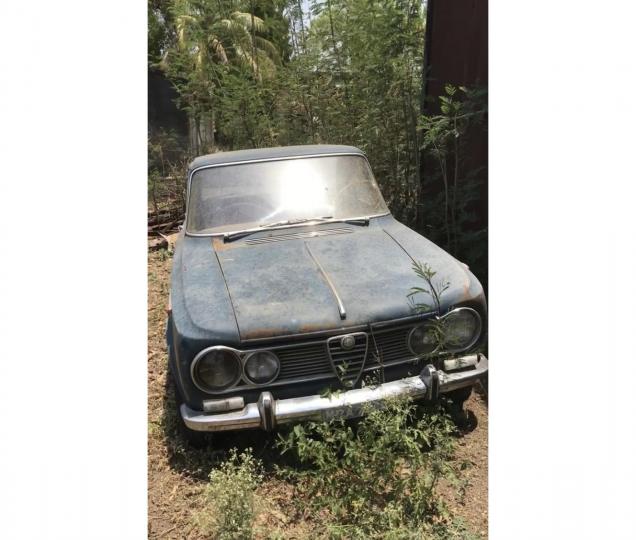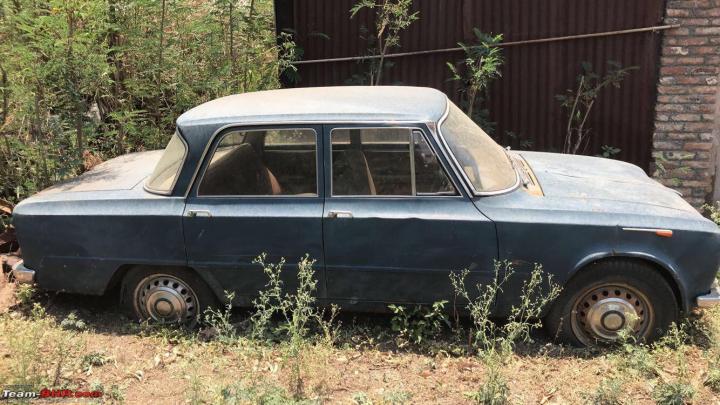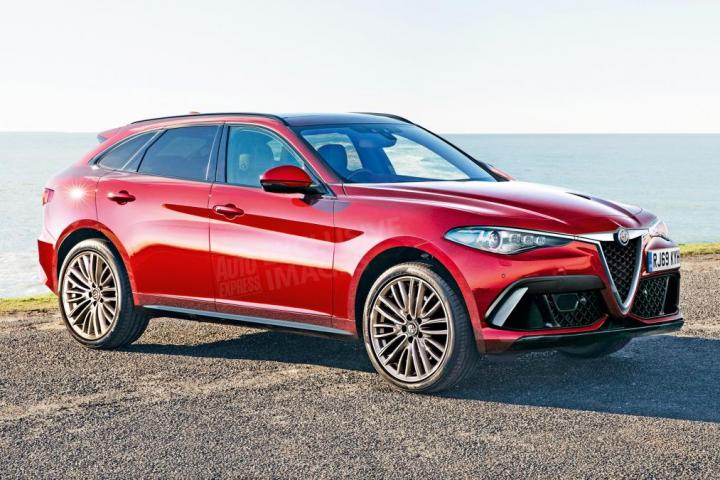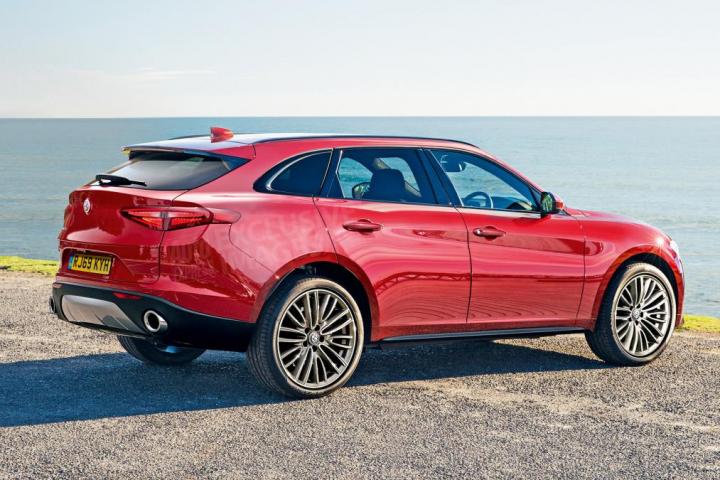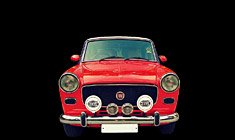News
Buying a dream sports sedan: Have I missed the boat?
The world is going electric, and fast! As a self-proclaimed, born petrol-head and keen driver for the past four decades, I could not believe I did not prioritize buying a fun-to-drive car for myself.
BHPian Viju recently shared this with other enthusiasts.
So I am 40, happily married, with 2 beautiful kids. I bought the perfect vehicle for my family (a spacious 3 row SUV) just over a year ago, and it is really nice to drive - AWD, comfy, luxurious etc.
But this past Saturday night, I woke up from a terrible nightmare - all sweaty, scared and feeling really awful. I have had a few 'regular' cars until now, in multiple body styles - hatchback, wagon, minivan, and now, SUV.
But all of them have been Front Wheel Drive, at best, with part-time AWD. And the past three cars I have owned have been automatics - two of them were dreadful CVTs no less! I have never owned a car with more than 4 cylinders, or over 250 bhp.
The world is going electric, and fast! As a self-proclaimed, born petrol-head and keen driver for the past four decades, I could not believe I did not prioritize buying a fun-to-drive car for myself.
Sipping my coffee, looking at the sun rising over the Tokyo skyline, I wondered if I made a terrible mistake, and forever lost my chance of buying a 'real' fun-to-drive car brand new from the showroom - which in my definition goes like this:
- Low-lung, sporty, sedan - must be beautiful
- 6 cylinders
- Front engine
- Rear wheel drive
- 300 bhp+
- 450 N-m+
- 4 doors, 5 seats
- 6 speed Manual Transmission
- RHD
Before my family could even get out of their beds, I frantically started searching online for such a car.
After an hour or so, I could find only one car which met all criteria. But I am pretty sure the date of expiry on this five year old bottle of wine is not much longer (I cannot buy my next car before 2026 at least, unless I win the lotto, which is impossible, as I don't buy it!).

Pic courtesy: bcimracing
Am I missing something? Is this it? Did I miss my chance of ever owning my dream car, brand new from the factory?
And no, you cannot convince me to go for the ZF Auto, no matter how good it is! (Believe me I know it is good, ZF is my employer no less).
Help?
Here's what BHPian DicKy had to say on the matter:
Erm... I won't vouch for the beauty part. But all these do scream at that quintessential sports sedan. The M3. Though am not sure of the manual transmission part in Japan. A decade ago, maybe could point towards Nissan or Toyota for the above mentioned criteria (except adjust power for the 2000s)
The Alfa Romeo while beautiful to look and hear, from the reviews it seems Italian enough. One look at that B pillar positioning, you know this won't be as well thought out as the Germans.
Assuming you would be coming back to India for good, why not use TR when you plan to come back to import a car that would not just be a keeper, but a heirloom too. ( I sound stupid saying that)
Here's what BHPian GForceEnjoyer had to say on the matter:
I'd say no, the dream sports sedan isn't dead for now. With a manual though? That is debatable.
The Cadillac CT-5 V Blackwing is currently my definition of a sports sedan (not luxury sports sedan, under which I'd classify cars like the M5). A purely rear-wheel drive sedan with a manual transmission paired to a 6.2 Litre 670 horsepower supercharged V8 engine is literally what dreams are made of!
But Japan unfortunately does not get it, so your best bet would indeed be an Alfa Romeo Giulia or an M3 (less the manual unfortunately). Truth be told, manuals in this segment are really rare nowadays. So unless you're happy with an automatic transmission, the options become rather limited. A BMW 540i came to mind too, but then again no manual available unfortunately. I can only wish you good luck with your search.
Read BHPian comments for more insights and information.
- Tags:
- Indian
- Alfa Romeo
- sedans
- sportscars
News
Issues with my Alfa Romeo Spider & my visit to a car workshop
I noticed peculiar spots on the front window while driving. So, I stopped & opened the bonnet & it was a mess.
BHPian Jeroen recently shared this with other enthusiasts.
I am very annoyed with myself! Really made a mess of my Spider the other day.
I had gone for a day of touring, a gorgeous day, my wife was doing some other things, so I decided to go touring. After a while, I noticed some peculiar spots on the front window. I thought it might have come from trees or so. So I pulled over at a petrol stop and removed them. Drove on, but the spots were coming back. Stopped and cleaned them again. Only after it happened a third time, I decided to investigate a bit better.
I opened the bonnet and the problem was immediately very clear. Just before I had set off, I had topped up the engine oil and forgotten to put the oil cap back on! Oil had sprayed everywhere! Luckily, the oil cap was still there, wedged between a spark plug and the valve cover. I found a nearby self-car wash and cleaned up all the oil and hosed down the engine bay as best as I could. Surprisingly small amount of oil had disappeared from the engine, but it was still a huge mess.
I am still mopping up and cleaning more. When the Spider is parked, oil keeps leaking out of nooks and crannies. Very annoying.
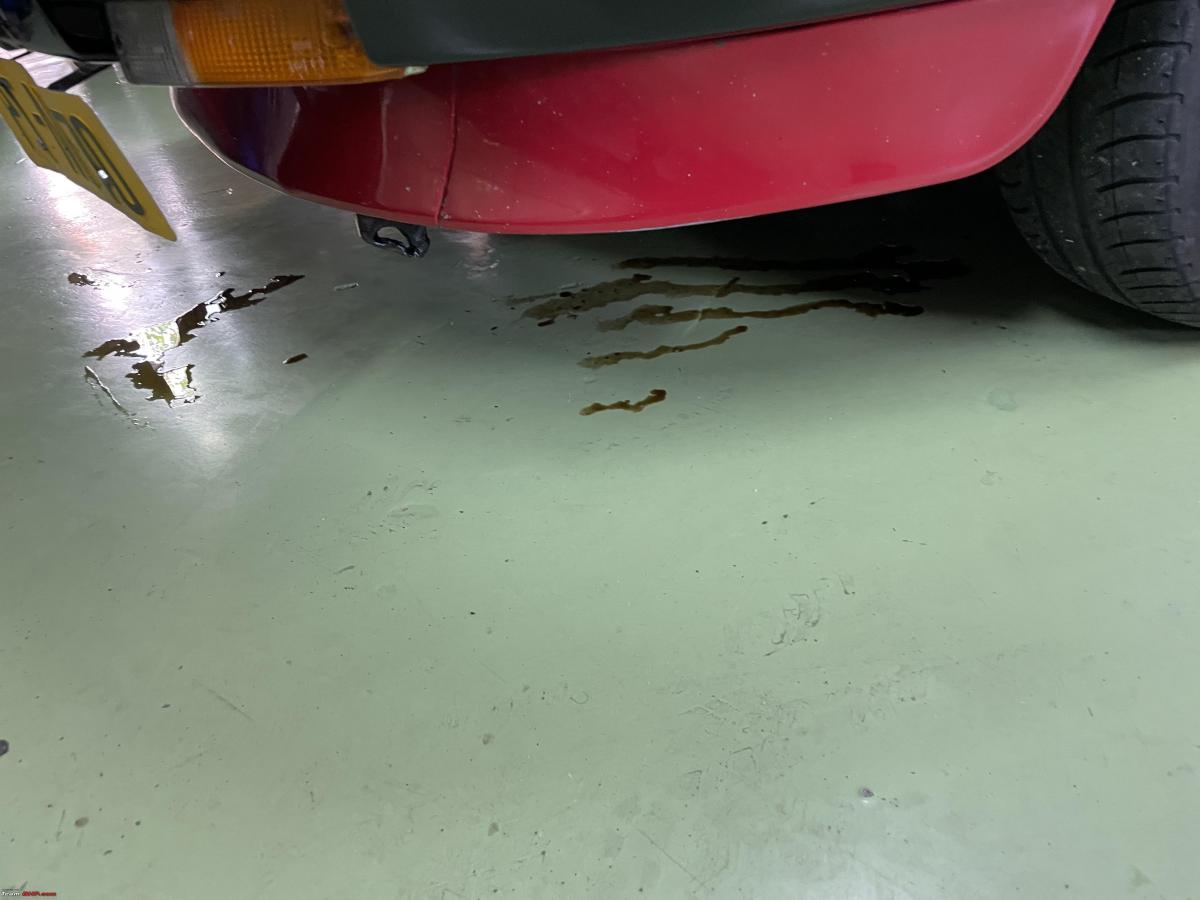
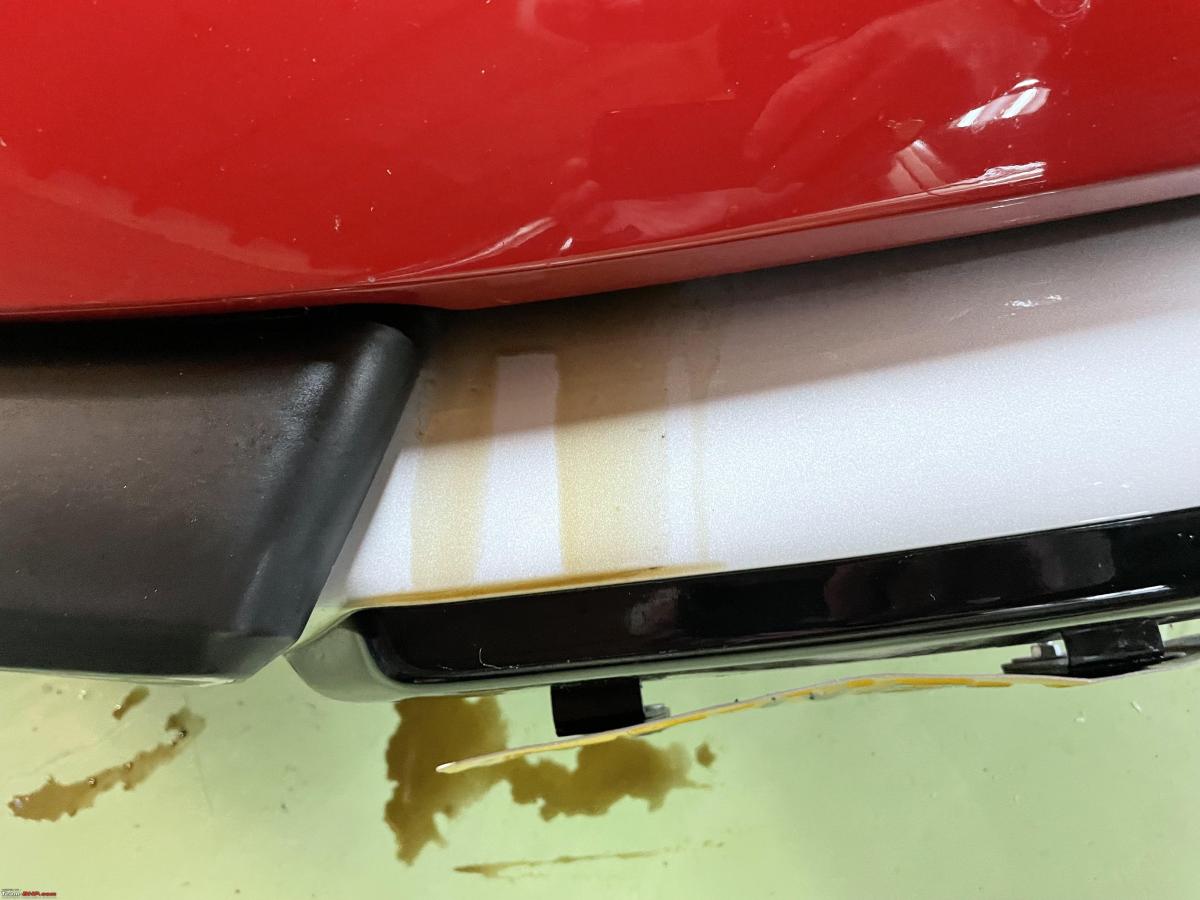
On the upside, it is oil and a bit of extra rust protection is never a bad thing on an old Italian car!
Whilst I was mucking out the engine bay I also noticed the cover of the air mass flow meter being a bit loose.
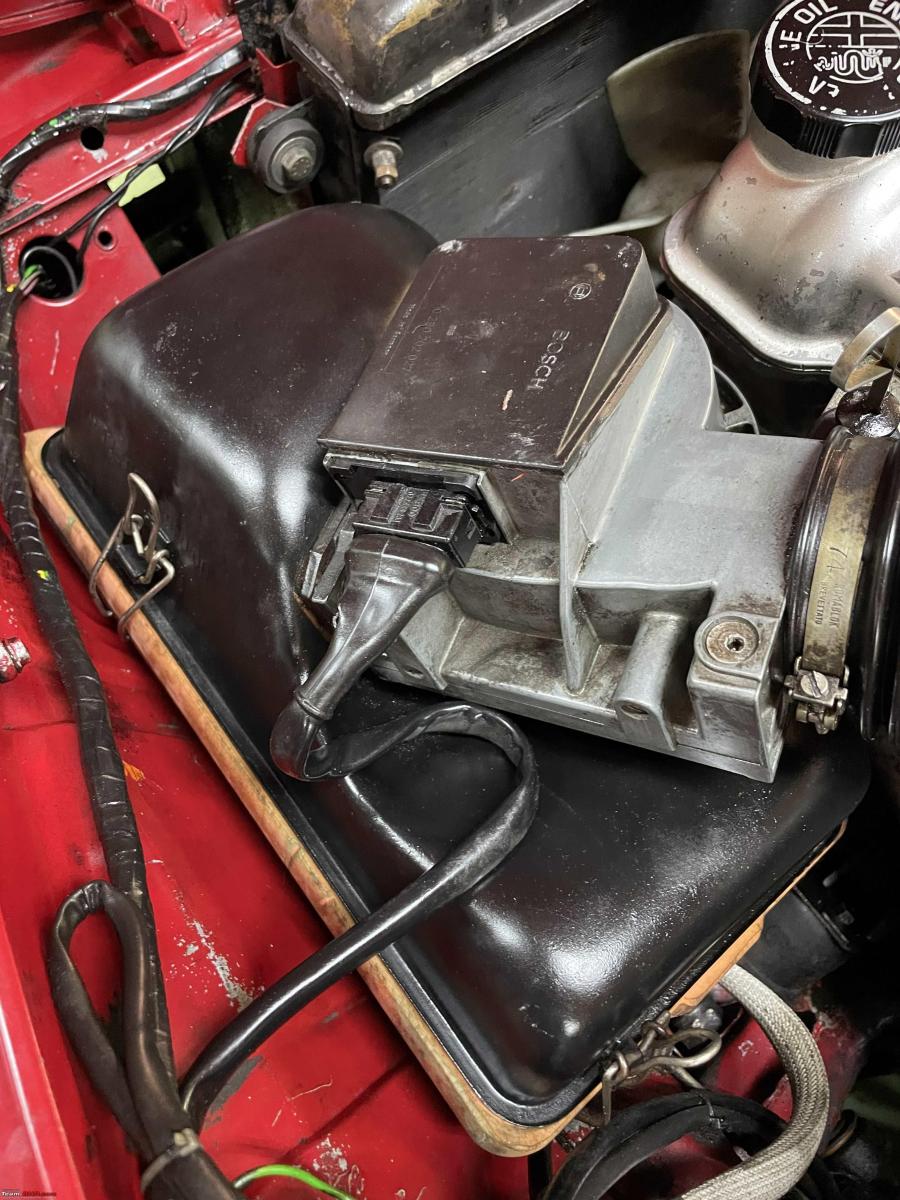
So I removed it, it is held in place by nothing more than a liquid gasket. So I cleaned everything and applied some new gaskets.
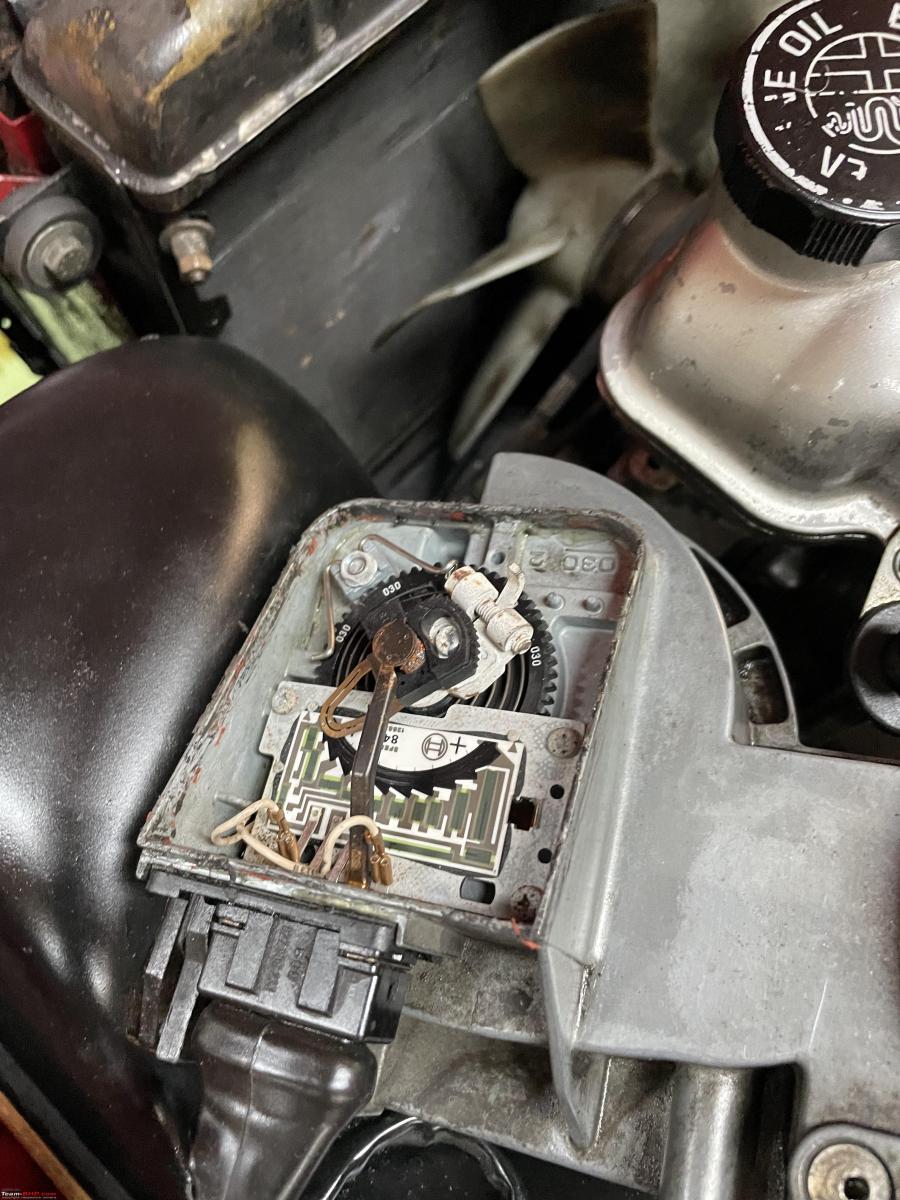
This is the first time ever, I have seen the internal bits of this sensor. I almost wish I had not. It doesn’t look all that great. But I am not going to mess with it. These Bosch air flow meters are incredibly sturdy, so I am just leaving it.
Yesterday I went to a workshop about car respraying, polishing and similar things. A very interesting company.
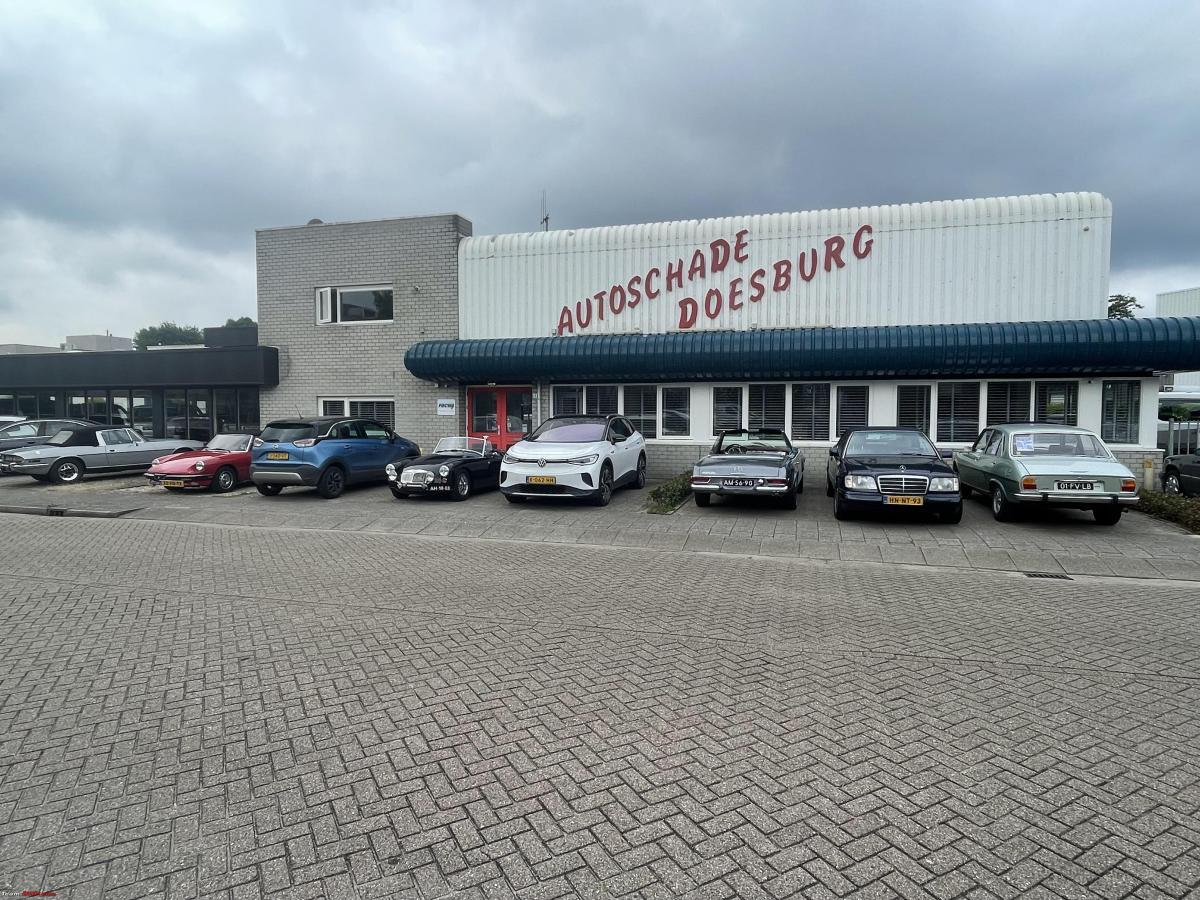

It was organised by the KNAC (Koninklijke Nederlandse Automobiel Club). It is one of the two National car owners clubs/associations. I used to be a member as for many years my classic cars were insured through them.
Many people turned up in their classic cars.
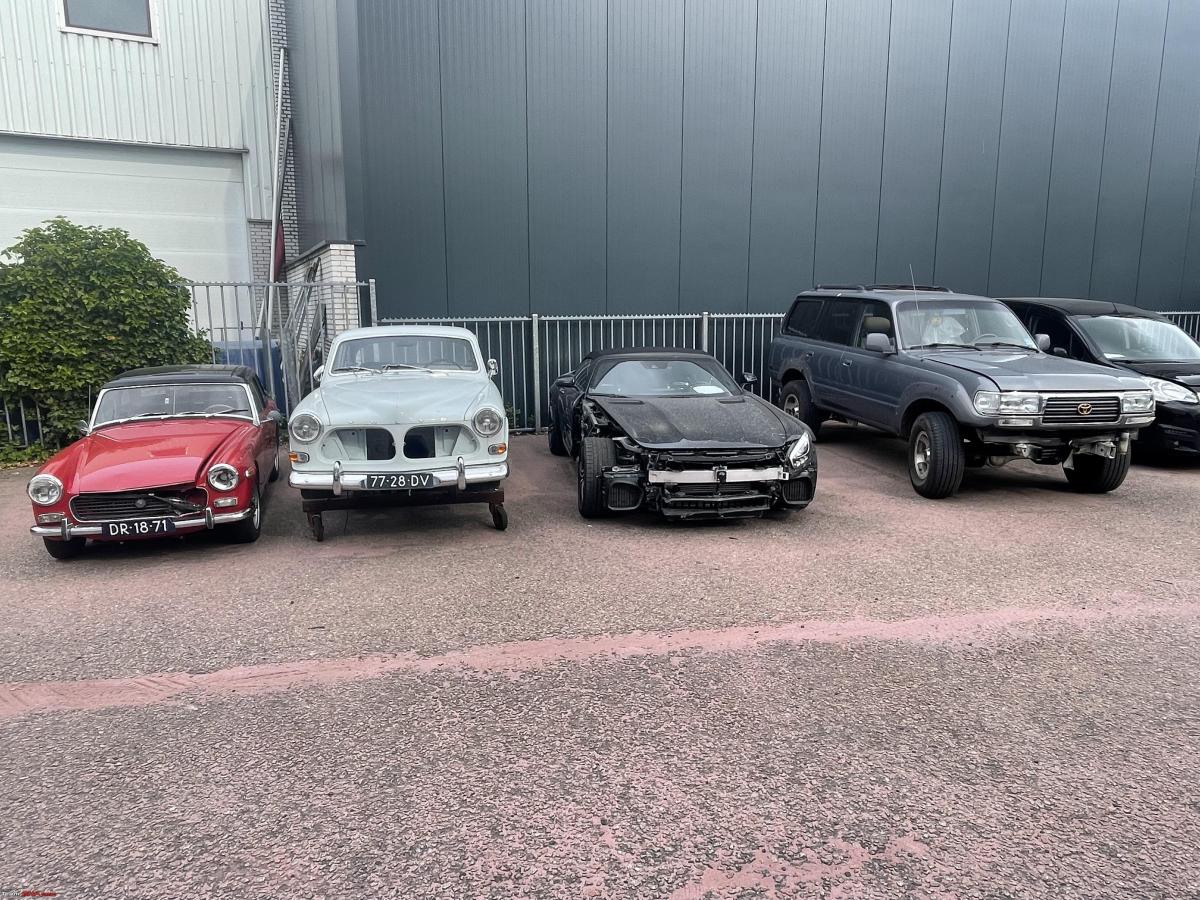
I took my Jaguar, about a 40-minute drive, just about all motorway.
We got a very interesting two-hour talk about the theory of car paint, paint damage and restoration and so on. Followed by a very typical Dutch lunch. (Bread rolls with meats and cheese). During the afternoon they gave a number of demonstrations on spraying, polishing and so on.

And of course, endless chatting about cars. Bumped into two old colleagues of mine and somebody from the Spider club. Nice catching up with them.
They had some interesting cars inside their workshop too.
The ever illusive Maserati!
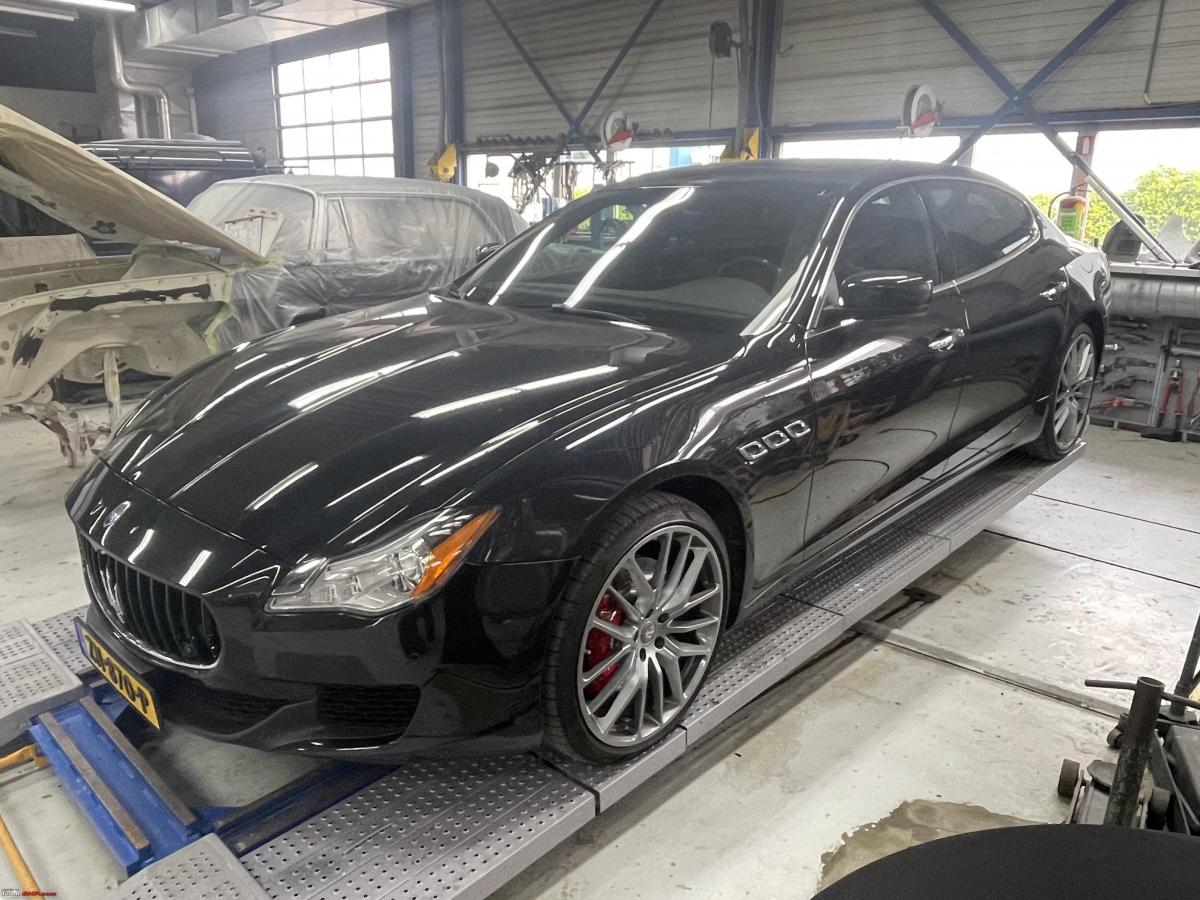
Jaguar XK (R) and a Lotus Elise
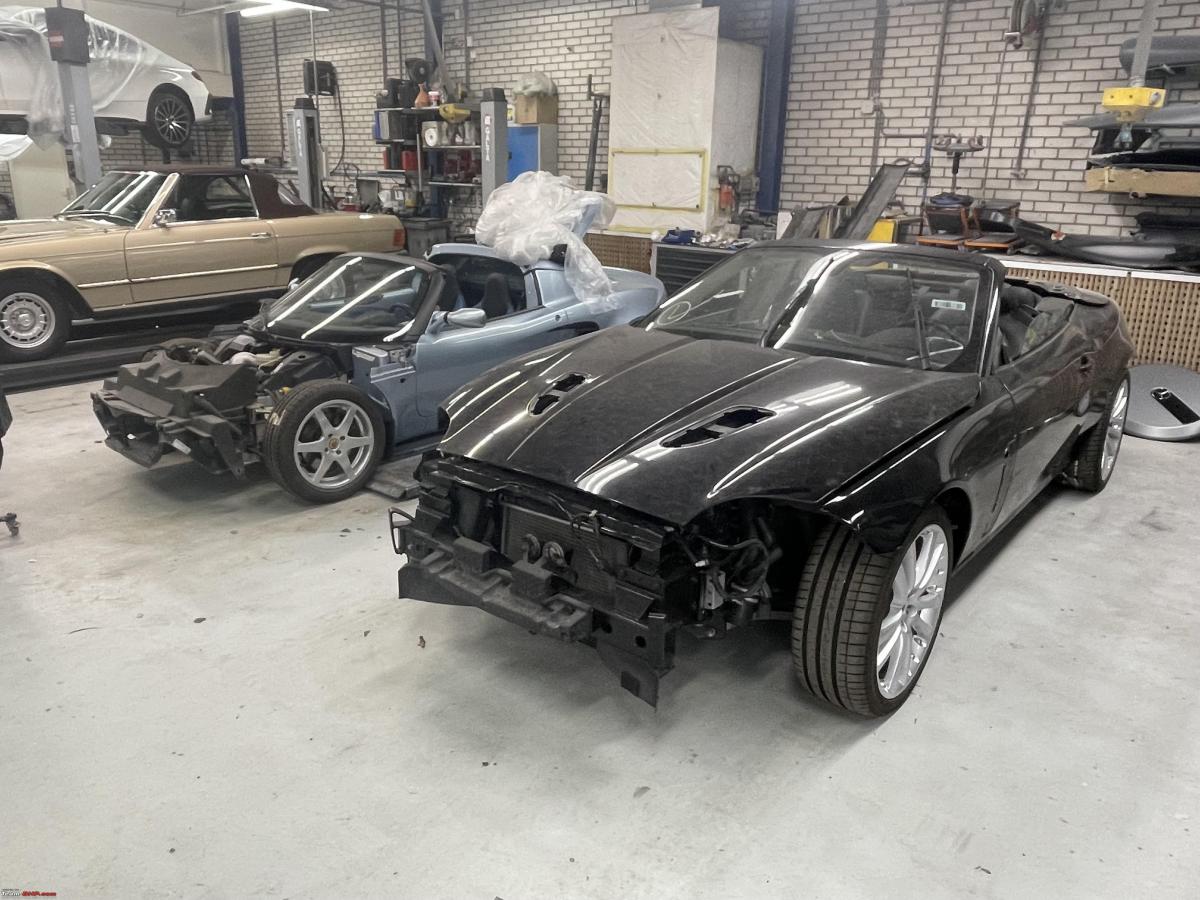
Very interesting workshop with lots of cool tools!
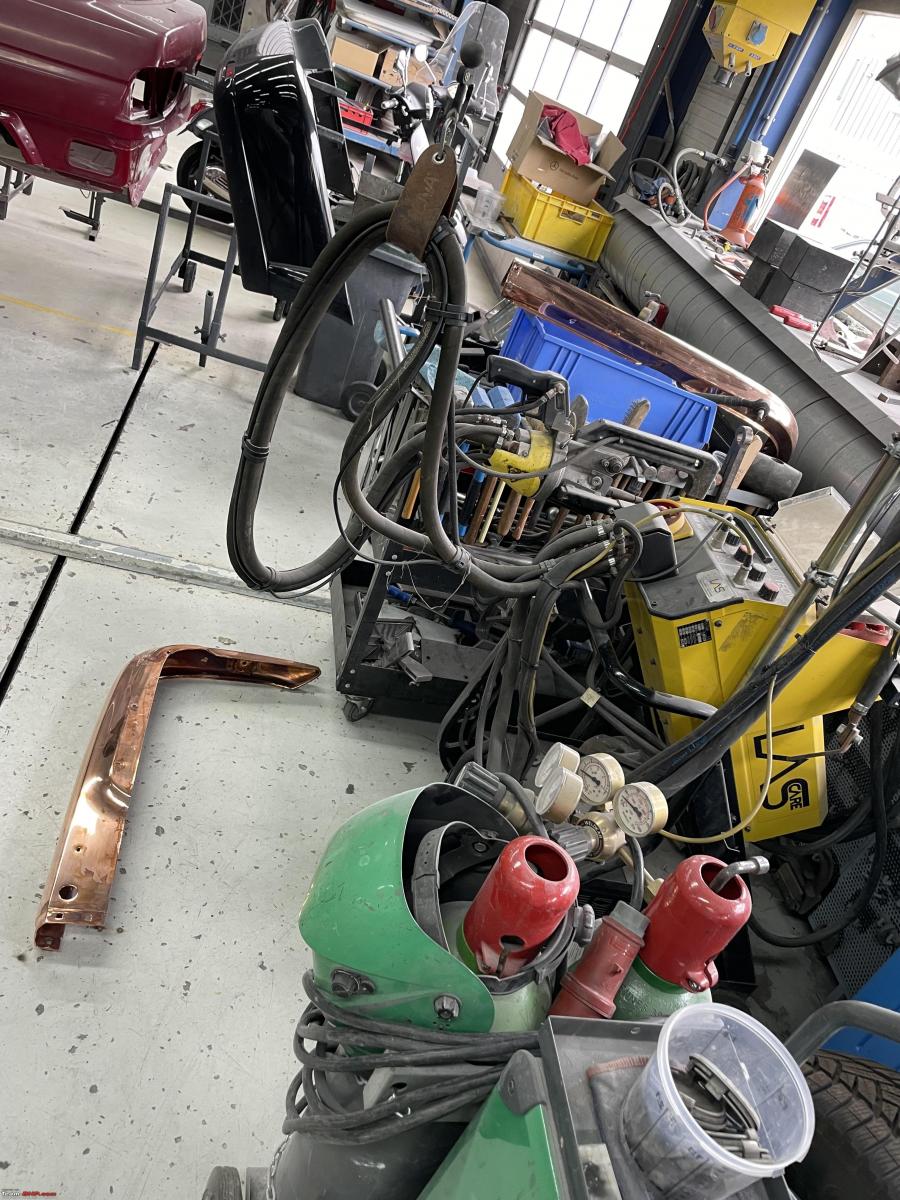
This is masking paper on a roll, different sizes. Note how the sticky tape is already attached on one side for easy handling/application.
We got a nice booklet with the slides we were shown earlier. A very interesting and relaxing day.
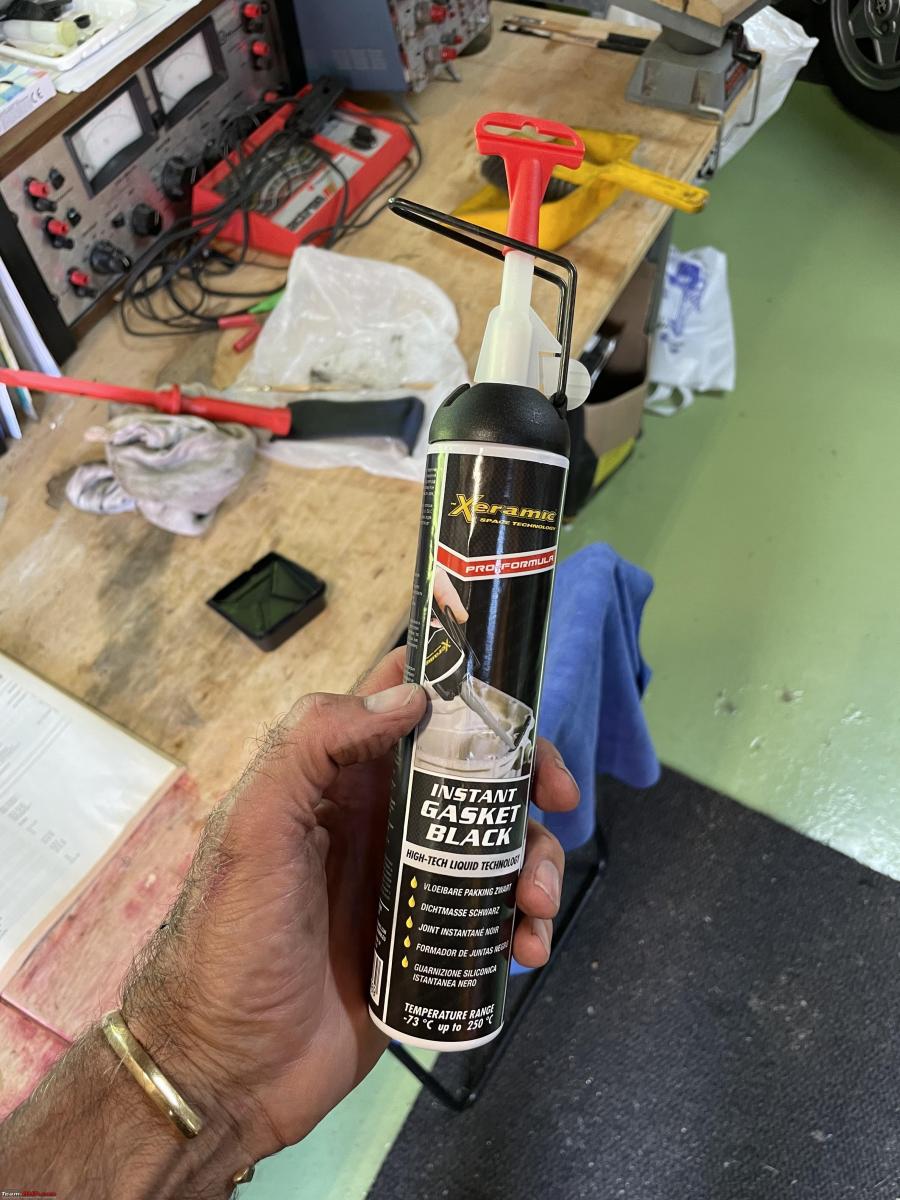
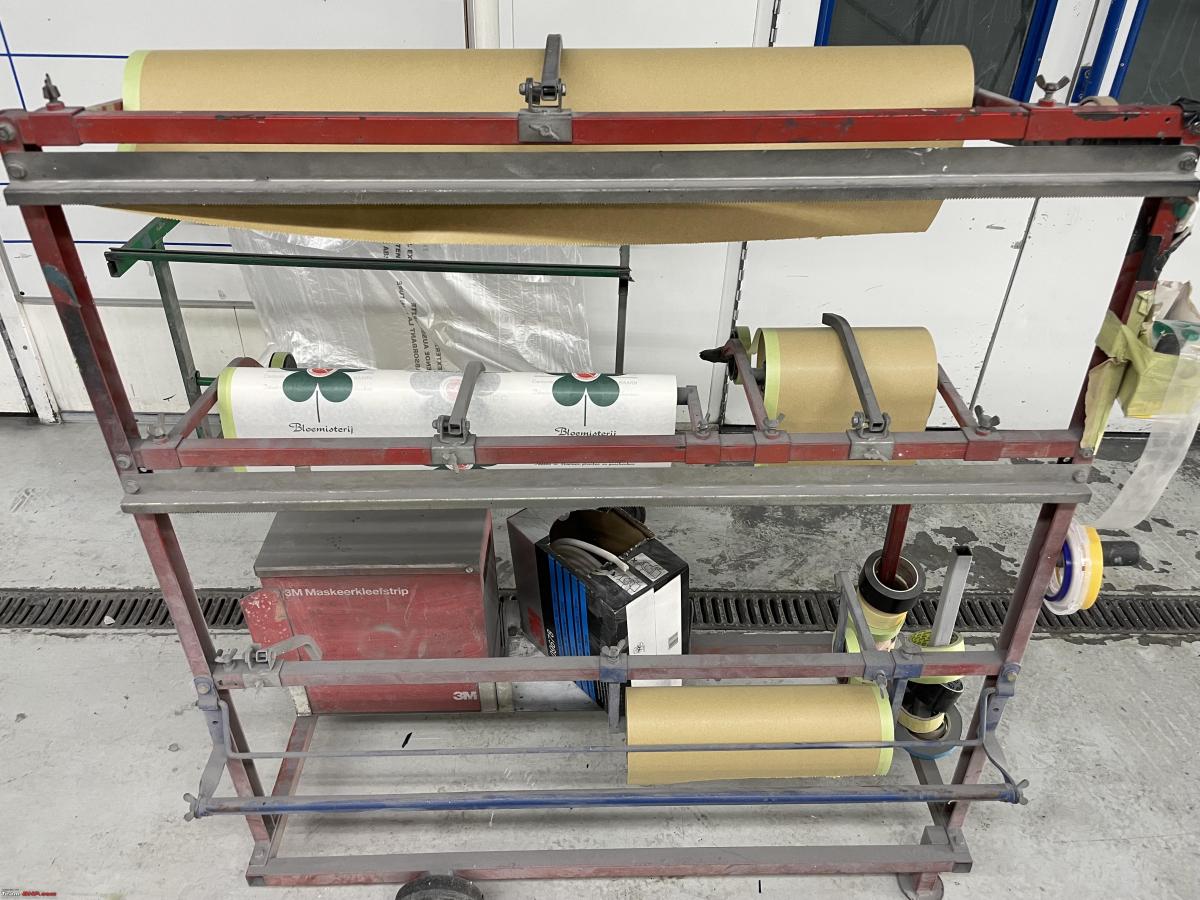
Check out BHPian comments for more insights and information.
- Tags:
- Indian
- Alfa Romeo
- engine oil
News
Driving across Europe in an Alfa Romeo to attend a classic car event
I was accompanied by my friend who also has an Alfa Romeo. We had to travel ~1250 km in 2 days to participate in the unique 12in12 event.
BHPian Jeroen recently shared this with other enthusiasts.
Travelling by car in (Western) Europe is very different from travelling by car in India. It is not about what is better or worse, they are just very different experiences. We have quite a few members in this part of the world, and also members visiting from India. Although this itinerary is about a very special car event that took place on the 18th of June 2022, near Saluzzo, Italy, I will cover the whole trip to give a flavour of what it is/can be like travelling by car in Europe. I will also mention the cost of various items along the route.
This trip was our annual Alfa Romeo Spider trip with my spanner mate and very good friend Peter. I have written about some of our earlier trips before, see:
Touring the Ardennes and Eiffel
Two guys, two Alfa Romeo Spiders, several ferries - A road trip in the UK
It is a long tradition Peter and I have. For decades we will try and get away for 4-6 days every year. Just the two of us and our two Alfa Spiders. Most often we don’t have a particular destination. We sort of look at the weather in Europe and just start driving. We like to drive on small rural country roads. We never book hotels in advance. We always travel outside the very busy main summer holidays, getting accommodation is never a problem. I will explain a bit more later.
For us being out on the road, driving, stopping for a coffee, having a nice lunch, and in the evening having some cold drinks and a nice dinner, talking and enjoying each other company and driving our Classic Alfa Spiders is what these road trips are all about.
This year was somewhat different. We decided to participate in the 12in12 event. So all of a sudden we had a very specific place and location where we had to be on a specific day: the 18th of June.
Have a look here to get some idea of what this 12in12 is all about.
Basically, a sort of friendly, one-day cannonball run through the Alps, Trying to cross as many Alpine passes or cols as they are also known, in 12 hours.
This is what the intro says:
Drive at least 12 and up to 21 of the most unknown yet challenging alpine passes crossing between the Italian and French border in just 12 hours.
A Marathon for classics (some younger cars accepted by invitation) in the N/W corner of the alps.
The formula is very simple, it's between friends, you drive the minimum of 12 passes we give you in just 12 hours.
Whilst there are many events that involve photo calls, posing and driving in lines with a nice plaque on your car this is not one of them.
THIS EVENT IS ABOUT DRIVING.
It's not an impossible event by all means, in fact in previous events just about everyone managed to finish without any problems and one contender drove with his 13-year-old son in a pretty standard Fiat XI9.
It is an endurance event, a test of driver, navigator and car, where you will drive some really spectacular roads, crisscross the border, drive-by snow, waterfalls, tight bends, switchbacks, tight spots or where two cars can't pass at the same time.
You will blast through tunnels and even places with some rough bits.
We have got it all.
It's done on many of Europe's unknown mountain passes, this is not the Stelvio with camper vans and baby prams holding everything up, here you will be higher and faster and most of the time with very little in front of you except maybe another participant.
But you can do it, you don't need a special car really you just need the will to enjoy, although a bit of concentration and preparation doesn't hurt.
A very small and cost-effective event for classic (or special interest) cars, with a high social flavour and which is by invitation only.
Sounds like what you're looking for? Then don't forget to drop us a contact at the bottom of the pages to keep updated.
Sounded right up our sleeve! Our Spider friend Niek had participated last year, so we got some excellent intel from him, prior to us setting off.
There was just one thing, driving to the starting point is about 1250 km, almost all motorway. And we had to take the motorway, neither Peter nor I could take sufficient time off to allow a more scenic, rural route. Peter and I had been doing a bit of planning on our TomTom’s a few weeks earlier.
There are several routes we could choose from:
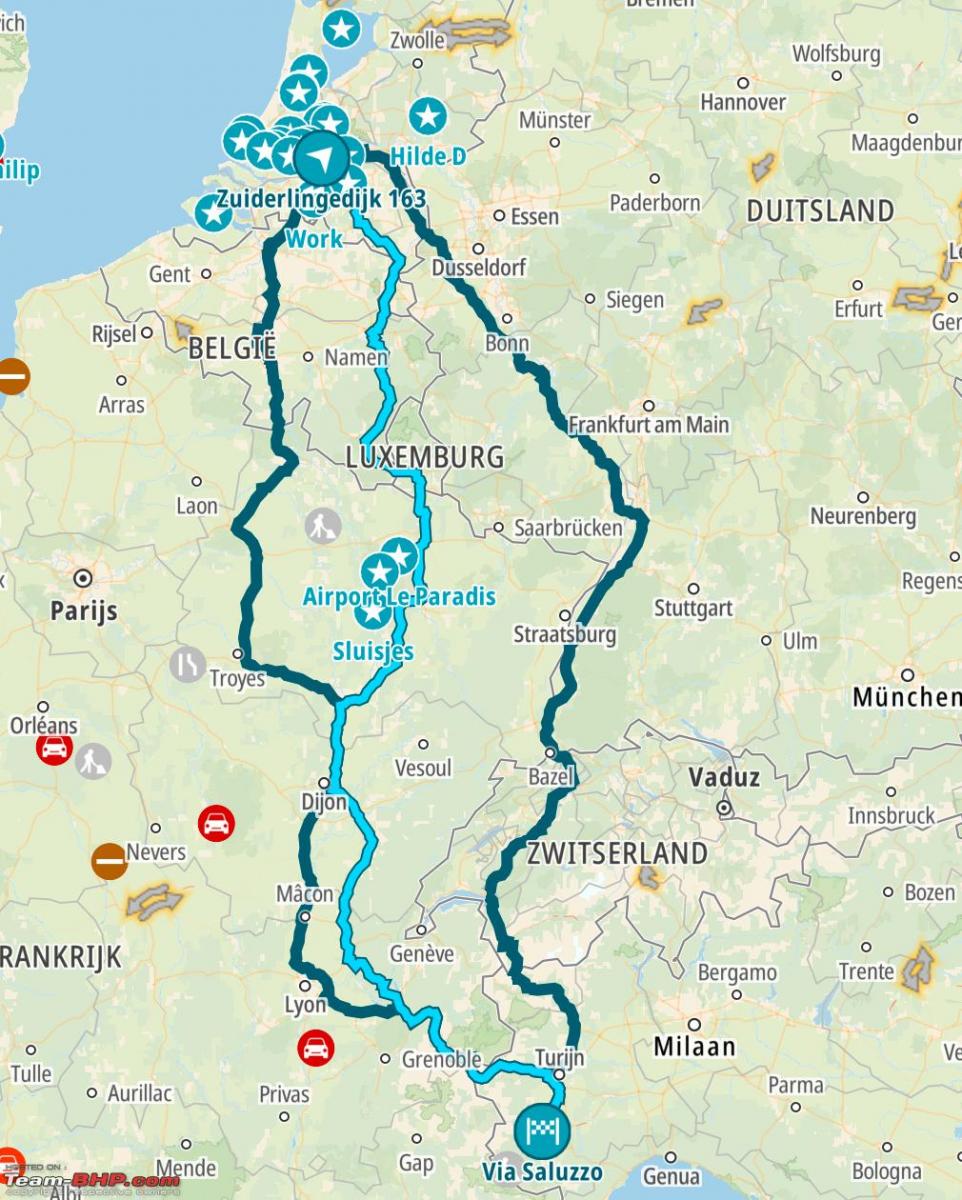
Of course, knowing your way across Europe is helpful when deciding upon which alternative to take. The quickest route, in theory, is via Germany. But we know from long experience there will be a lot of road works along the route. Also, you will find yourself driving through the Ruhr area, not very pretty.
So we decided upon the route that would take us from our home, Antwerp, Brussels, Luxembourg and then take the so-called Route Du Soleil south to just North of Lyon where we would start heading east and enter Italy through one of the imposing Alp tunnels.
We had two days to get to the starting location. We wanted to arrive mid-Friday afternoon, which meant setting off early on Thursday morning. Peter drove down to our home on Wednesday evening, as he lives about an hour and a half north of us.
Of course, prior to setting off, we had done a bit more preparation on our cars. Obviously, it does make a difference, whether you are driving a modern car, or two old classic Italian rag-top sports cars. These Italian cars might look great, but they were not that well built to start with, bits fall off en route, and other bits might stop working, so you need to be prepared.
Peter and I always carry a large number of tools and parts with us. However, this would be a journey which would put our little Spiders under considerable strain. Lots of mileage in a short period and mountain driving too. So we got ourselves some additional spare parts. Peter and I used to be on the Technical Committee of the Dutch Alfa Romeo Spider Register, so we know a lot of people in the Spider community. Peter got us a complete spare parts kit free of charge, we only pay for the parts we would use. Everything else we just return after we come home again.
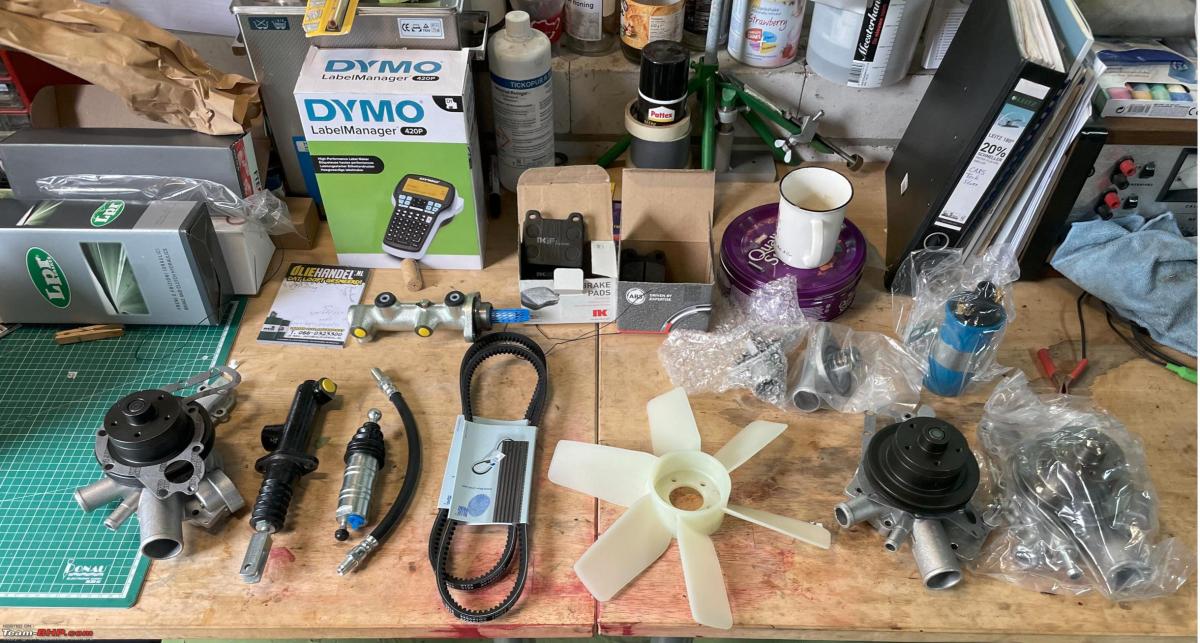
More about these parts later, spoiler alert; we still found ourselves short of the correct part!
Always carry lots of water and a tow rope! Driving in a rag-top sports car, top-down in the blazing sun is thirsty work!
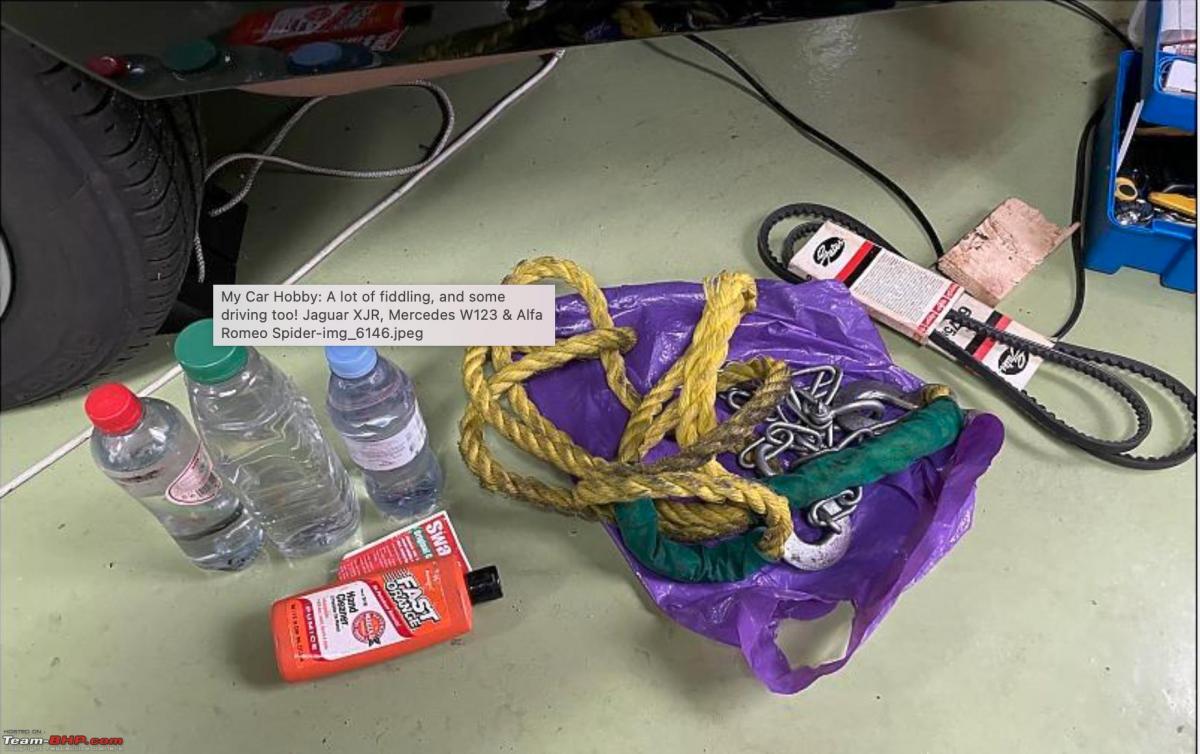
My usual set of tools and box with many useful bits.

And some more odds and ends. Watch that distributor assembly! It was to play a crucial part! And as you will find out, I should have had a much closer look at it. If you zoom in on it, you can actually spot the problem.

Some other crucial parts when driving an open car - a cap and sunblock!
I have two caps. The one on the left I have owned for almost as long as I have owned my Spider. It is tethered to my driver's seat. It is what I call my high-speed motorway cap. I have tried any number of hats and caps. But very few will stay on when you are driving 100 - 120 km/h top down. This one does! The other cap on the right is my rural driving cap. It is more comfortable, but only up to speeds of about 90 km/h.
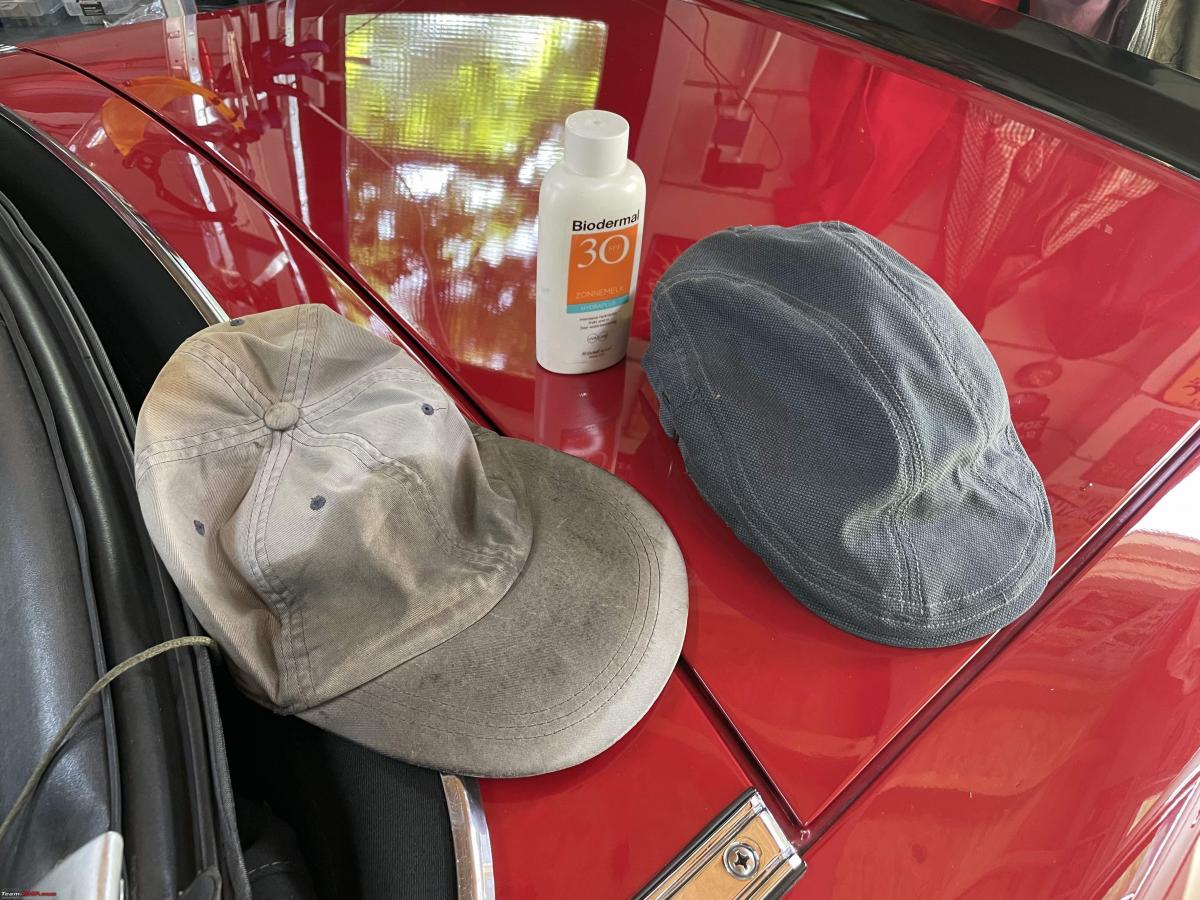
You do want to wear a cap when driving an open-top car for at least two reasons; One is that the hair on top of my head is not as lush as it once used to be. So my skull is exposed to the sun! It needs protection. Also, a cap really protects your eyes. Even when wearing sunglasses but no cap, your eyes will tire out quickly in the bright sun.
Also, according to my daughter, all old gits in a classic sports car should wear caps. It's the rule! So there you go!
There are a few other things you need to take with you when travelling/driving through western Europe.
Obviously, passport, driver's license and car papers. In Europe, you will need to have your car registration papers and proof of insurance with you. The latter used to be called the green card. Because they were printed on, Duh, green paper for some reason. These days the insurance company mails it to you and you need to print it yourself, so white, not green. But it is still known as a “green card”.
On these long trips I also always take a spare set of keys. Very early on in our marriage, I asked my wife to keep the spare set during a road trip. Upon returning home she had lost them! As not to stress our marriage any further, I look after the spare set myself. I usually stick it into one of my carry-on bags.
Lastly; money, the real paper deal and the plastic ones. These days in countries such as the Netherlands, Sweden, Germany you can do without cash, certainly in all the main cities. But when you find yourself in rural France or in a remote village on an Alpine pass in Italy, the local petrol station might not accept any cards! So better bring cash, small denominations and coins too. When you travel in western Europe you will be fine with Euros. Switzerland still has its own currency. But we were highly confident that the Swiss would have perfected all possibilities of electronic payments in any imaginable location all across Switzerland. So we did not bother with Swiss Francs. The Euro cash is primarily for rural France and Italy, just in case.
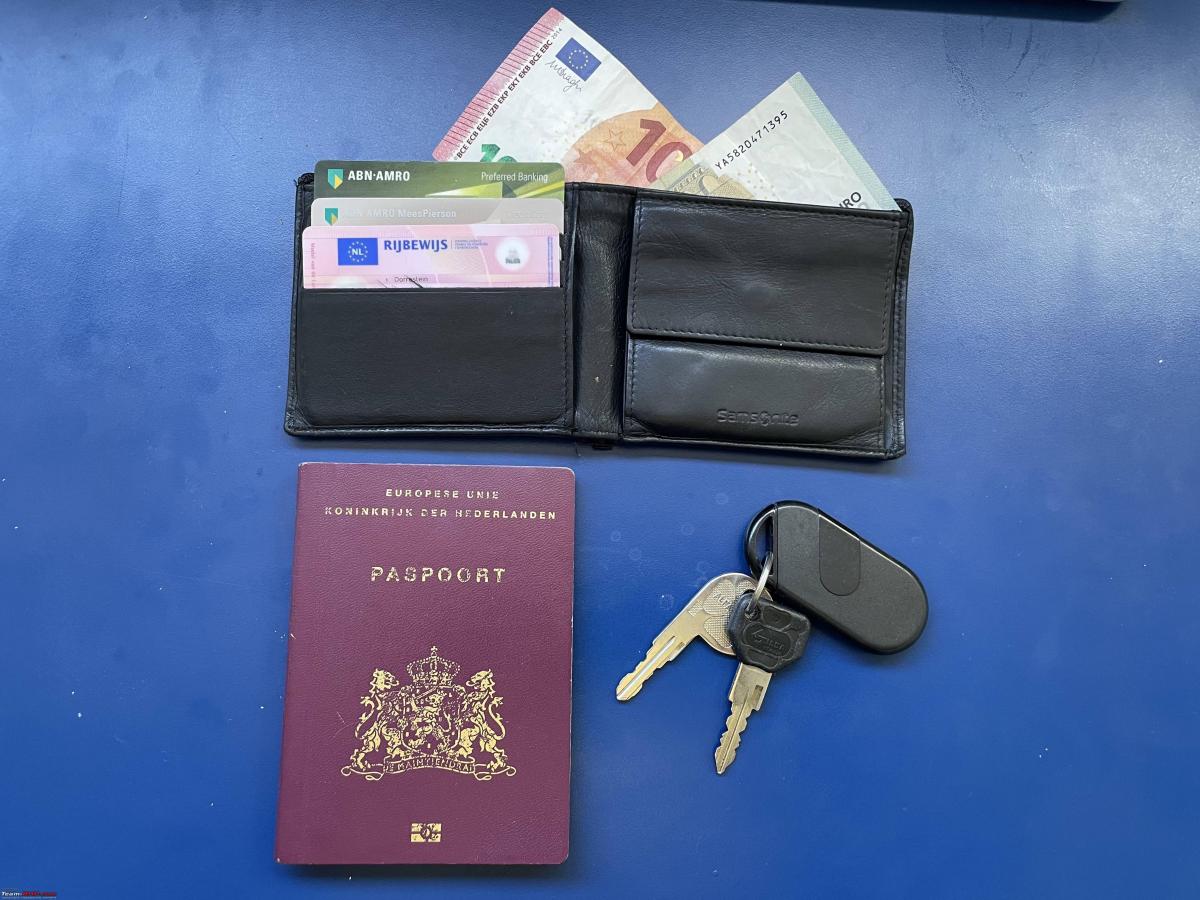
So I bring my regular Dutch Bank direct debit card and a Master Credit Card. The direct debit bank works just about everywhere in Europe these days as well, even contactless. Just a tip for those of you who might want to visit the Netherlands, you will be surprised (but not pleasantly) by how few shops and businesses in the Netherlands accept credit cards. You can’t buy food in a supermarket or even pay for fuel by credit card might be problematic!
I always bring two simple canvas bags when touring in my Spider. Canvas rather than my normal trusted Samsonite roly-poly hard case. The canvas bags are easier to store and cram into the boot. All my clean clothes and everything else goes into one, whatever has been used / dirty stuff goes into the second bag. Very simple, very effective, at least for me.
And of course, a mobile phone with a good international data package is crucial! You will see why, later on.
Obviously, the Spider needed a couple of things checked as well. I keep it in really good condition, so it is ready to roll any time. But prior to such a long tour I usually do a few checks. Check tire pressure, including the spare. I keep the spare tire about 10-15% above the normal pressure to allow for some air to permeate out over time. Double-check oil and coolant. Give it a good wash, wax and hoover. With all the tools and parts, it's ready to roll!
There was one final preparation I had to do; On the Saturday night, after the completion of the 12in12, there was going to be a party, announcement of the winners and so on. All participants were requested to bring some local beer, so we could all sample each other's beers.
So I went off to our local off-licence. To stay in line with TeamBHP policies on drinks, I have taken a photograph of the non-alcohol variant. Three very local beers, from three different towns here in the Netherlands.

I could have brought Heineken, but the Netherlands has a thriving small/local beer industry. So I thought would be nice to bring something a bit more unusual.
Peter arrived on Wednesday evening at around 21.30 at our place. I had already moved my Spider out of the garage. It involves shunting four cars around the yard and onto the dike. Did not want to go through that hassle early in the morning.
This is the only time you will see our Spiders with the hoods up; at night, parked!
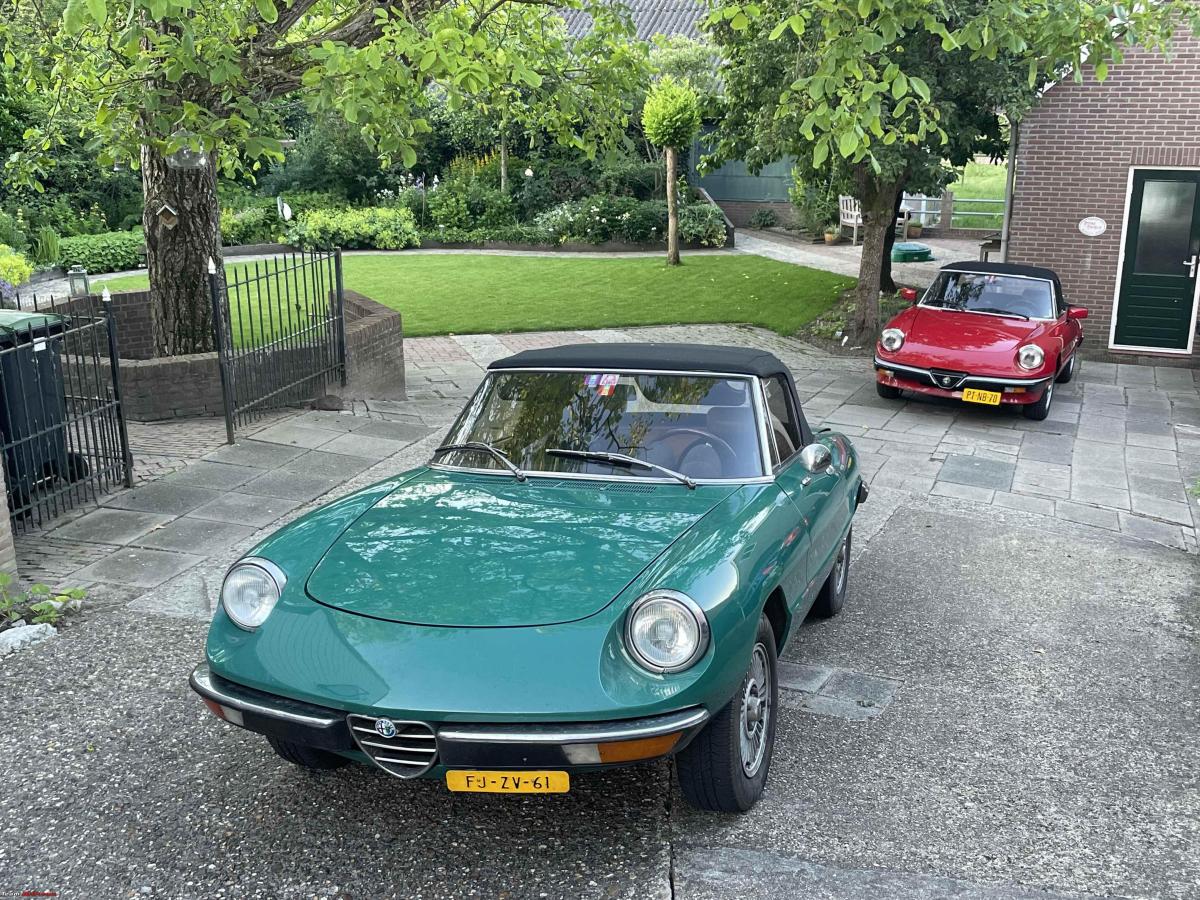
Peter and I had a quick (alcohol-free) beer to discuss the final details of our route.
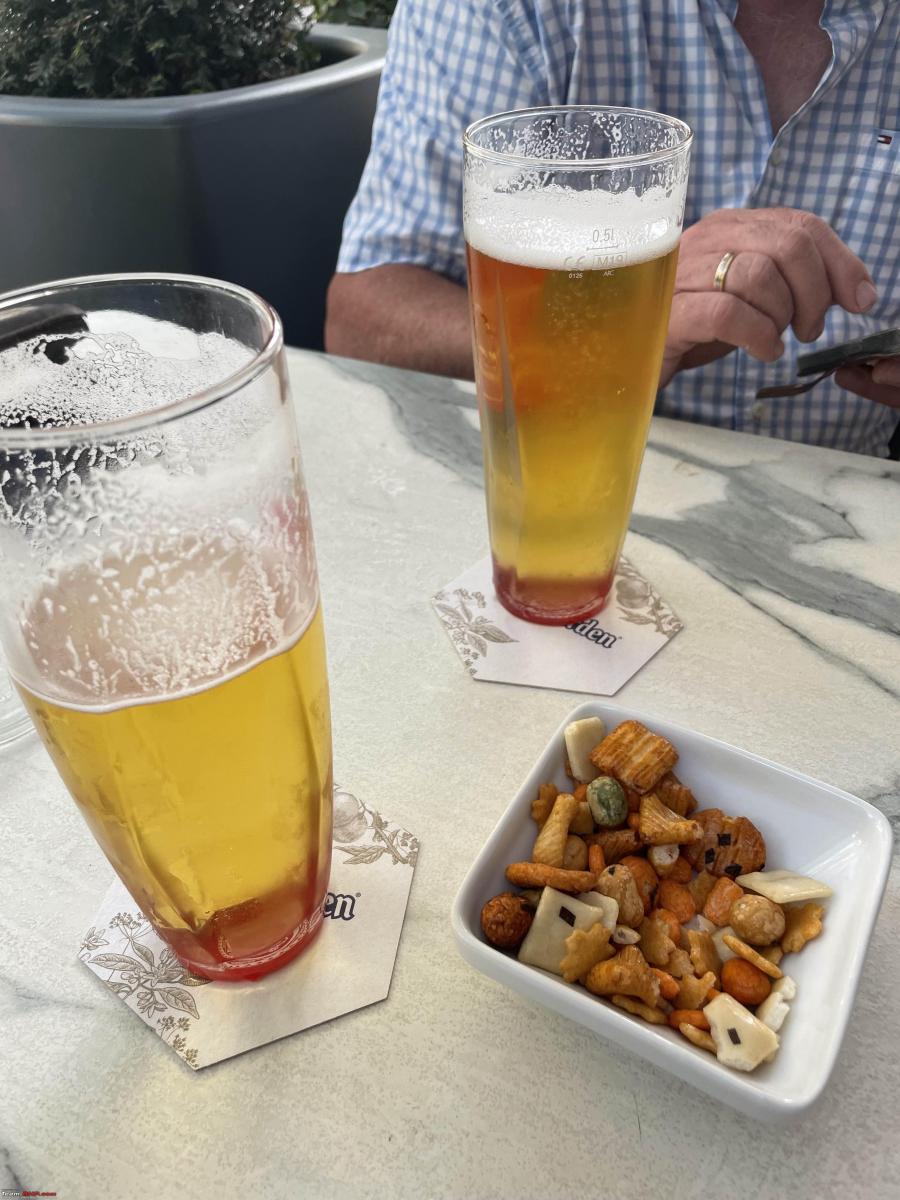
We decided to have breakfast at around 07.00 and be on the road by 08.00 latest, if not earlier. We also checked the weather forecast one more time. Subsequently, we double-checked the amount of sunblock we had brought! It was going to get hot!

We would have two days to drive about 1250 km. We decided that we wanted to do about 800 km on the first day.
The following day we were on the road by about 07.30. This would be my office for the next six days!
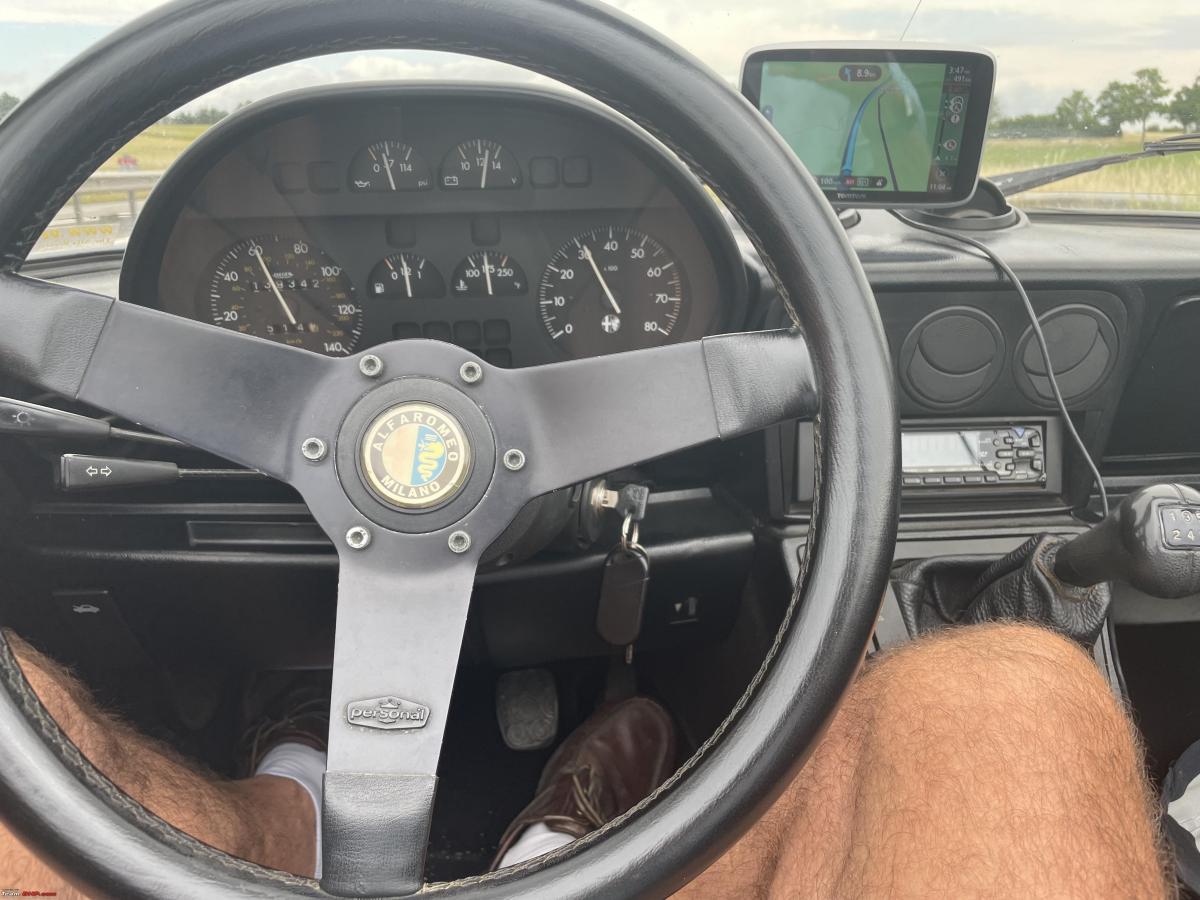
Traffic around Antwerp seemed even worse than normal. Normal traffic around Antwerp being pretty bad as it is. Our TomTom’s Traffic information system gave us a few detours, which added some 50 km to our total distance, and still saw us stuck in traffic on the Antwerp ring road. Luckily getting around Brussel was pretty easy.
Peter and I used to drive our Spiders at 3500 RPM on motorways. That would get us about 120 km/h. But both our Spiders and we have gotten a bit older. So these days we tend to cruise a bit slower, about 3100 RPM, doing 100-105 km/h.
It makes cruising a little easier. The noise and the wind in these little sports cars are something else. Add 10km/h and it increases exponentially.
After having driven tens of thousands of kilometers all over Europe we have developed very simple routines, that work for us. We always program the routes into our own TomTom. Then we check that we are getting the same distance and ETA. If not, and it happens, we check where the route in one TomTom differs from the other. We drive in a little convoy, one of us up front, one right behind. We have developed some hand signals to communicate about stops, when overtaking etc.
We usually drive about 1,5 - 2 hours and stop for coffee / toilet / fill up with petrol. After each stop, we swap who drives up front. Here in the Netherlands I usually run all my cars till I get a reserve fuel indication on the dashboard. There are petrol stations everywhere. Also on motorways, you are rarely more than 10-20 km from a petrol station.
Certainly on French motorways that is not always the case. You might find yourself on a stretch of motorway with 100 or more kilometers between petrol stations! And not too many exits in between either! Luckily, in countries such as France, at the signs for each petrol station, they will also list the distances to the next two/three petrol stations. Even so, we just fill up at every stop.
Soon this would be a very familiar sight:
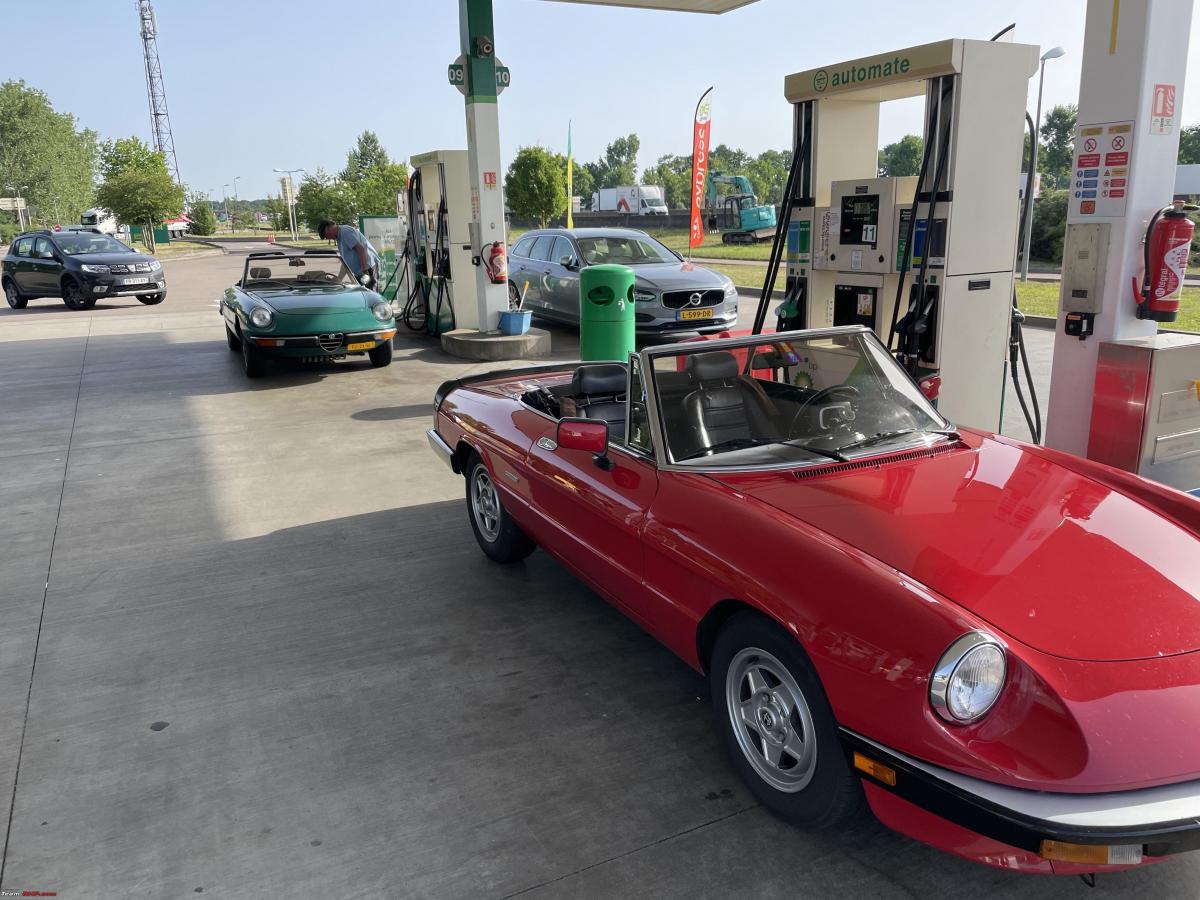
Peter’s Spider is a 1980 Serie 2 Coda Tronca, mine is a 1986 Serie 3 Aerodynamica. Peter has twin carburettors, mine has Bosch L-Jetronic injection.
Although there is not much difference in power, my Spider uses about 20% less fuel. I am doing about 1:11 on the motorway at these speeds. We had no trouble getting E5 petrol in France or Italy. We don’t care about octane 95 or 98, but we do care a lot about the fuel being E5 and not E10. A lot of the Octane 98 is still E5. The Octane 95 often is E10. It differs a bit from country to country though. Always check. Our Spiders can’t handle E10. In all honesty, if push comes to shove we would have put E10 in too. Because it would be used up in a matter of hours, so it is not really a problem. But we avoid it if we can!
Prices across France, Italy, Switzerland and Belgium varied between about Euro 2 to Euro 2,35 (INR 164 - 193). Not cheap, but still (a lot) cheaper than petrol in the Netherlands!
Of course, driving all day on motorways is a bit boring:
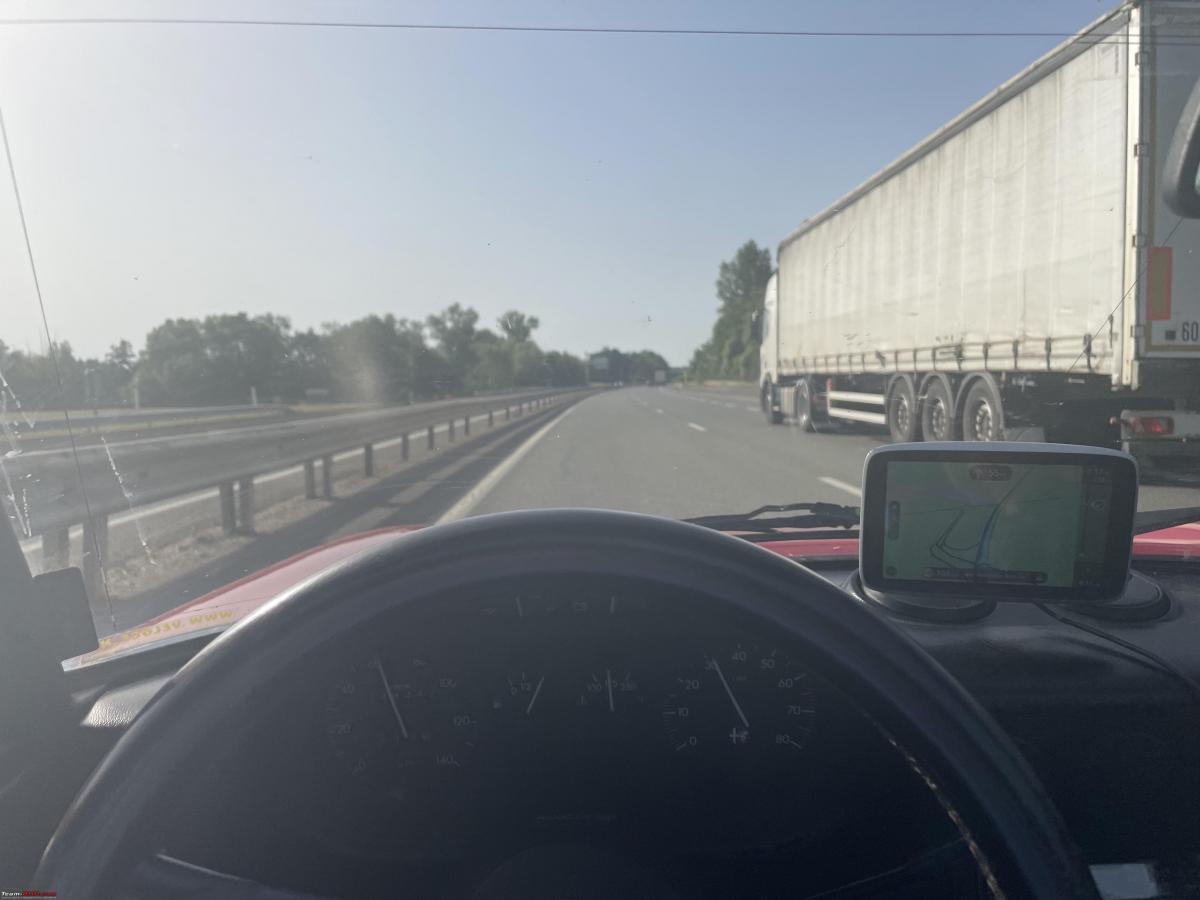
But the further south we come, and once we entered the Route Du Soleil, the scenery becomes very pleasant:
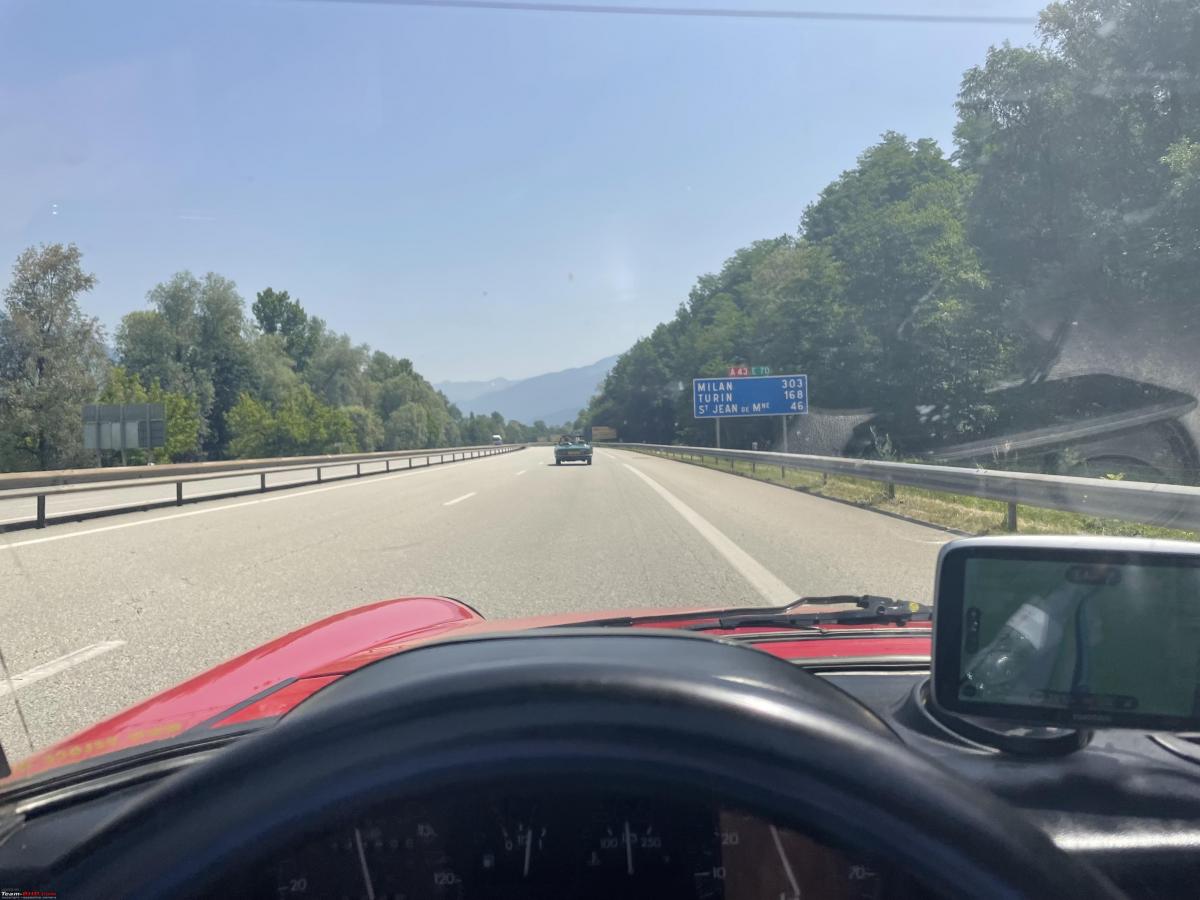

Large sections of the Route du Soleil are toll roads. Also throughout Switzerland and Italy, you are likely to find yourselves using toll roads if you want to make good time. Yes, you pay a fee, but most of these toll roads are well maintained, have good facilities, other than petrol stations, you will find restaurants, rest stops with toilet facilities, picnic tables, children's playground and so on.
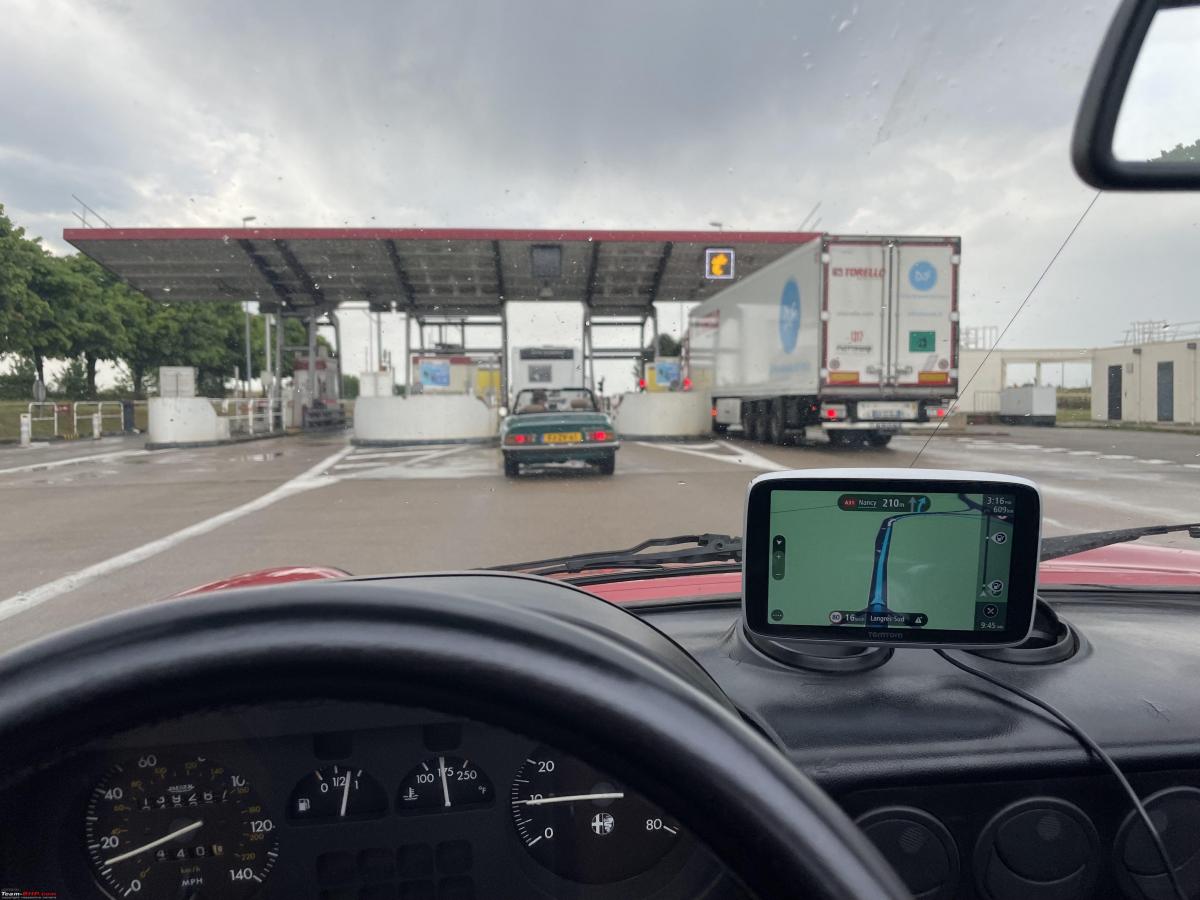
These days I am a bit challenged by things like ATMs, Computers, parking meters and so on. These toll booths are worse for me. Because they will have machines talking to you in French, or worse in Italian. Sometimes you have to push a button to get a ticket, sometimes the ticket appears automatically, sometimes you pay as you enter, and other times you need to push your ticket in a particular slot and a credit card in another slot. I have some problems with certain cognitive functions so these sorts of things can cause some anxiety. Usually, Peter would drive up ahead and I could watch what he did. Take a ticket, or push a button, or shove a credit card into the machine. Once the barrier was raised for him, he would drive through and wait right behind the barrier to ensure I got through too.
Toll charges vary a lot. We paid Euro 1,50 (INR 123) for a short section in Italy. These bits in France were usually around Euro 15 - 25 (INR 123 - 205). But they were fairly long stretches. In all, for the complete round trip, we must have spent a little over euro 200 (INR 16500) in toll alone. The most expensive ones are the two major, 13 - 17 km long tunnels. On the way down we crossed from France into Italy by the Frejus tunnel and going home we went via the Mont Blanc Tunnel. Each cost a staggering Euro 48 one way! (INR 3950).
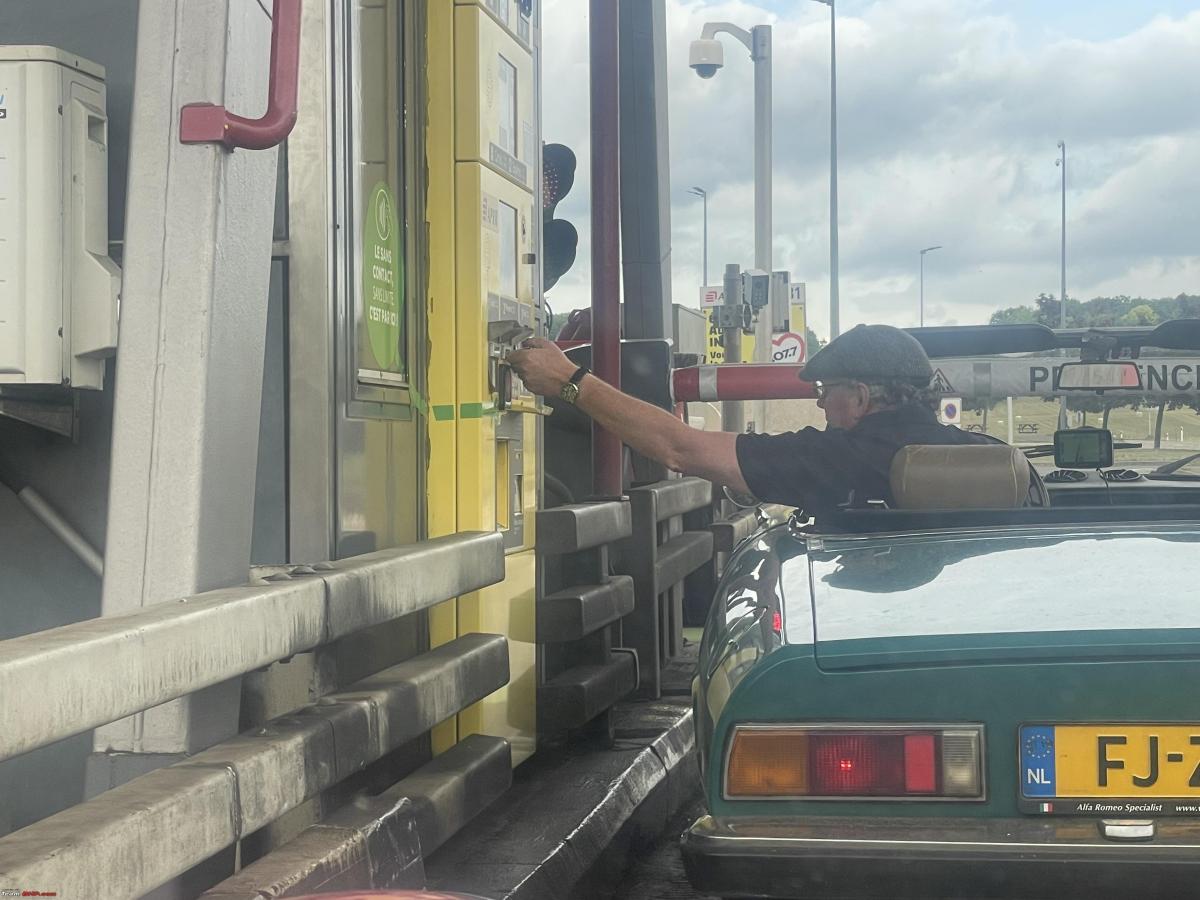
Around 1600 hours we had another stop. Filled up with petrol, as usual, had a bit of a leg stretch, and drank some water. We discussed our progress, which was pretty good so far. We always take our TomTom and mobile phones to where we are going to have coffee. So we check the route, make adjustments, and check weather updates en route. And around 1600 hours it is time to decide where we are going to haul up for the evening. We felt we wanted to put in some more miles. The more we did today, the less we have to do tomorrow.
So we use Google maps and look for nice small provincial towns along the route. We don’t want anything directly onto the motorway, just not too far away though. We tend to look for old historic towns, something with a citadel or a nearby castle, church, or monastery usually does fine. Because it will mean there are likely to be some restaurants and hotels and usually some nice local streets and squares to wander around. We decided on Chalon-sur-Saone. Whilst I was checking the tourist information getting some intel on where to go / what to see perhaps, Peter was already checking for vacancies in a decent hotel, near the town centre. We just about always use Booking.com. Very convenient app. Finding a suitable hotel and making an online booking is a two-minute process, if that. Very convenient.
Peter and I never keep track in detail of who pays for what. One-stop he will pay for the coffee, the next I would pay. He pays for the hotel, I would pay for the dinner, drinks and breakfast. We sort of keep a mental tally, but it's more by guts and feel and knowing neither of us wants to put the other out of pocket. Very convenient and it has worked for us for several decades.
So we jumped back into our Spiders, punched in the hotel address into our TomTom and drove another two hours and into the town centre. Parked near the hotel to unload our luggage and check-in. The hotel did not have parking facilities, but there was a proper parking garage just around the corner. So we went back to our Spiders to park. However, Peter’s Spider would not start. Those of you who follow my “fiddling with cars” thread know we had problems with his Spider before. Last year on our annual drive we had similar problems. Since Peter has replaced the starter motor and added a relais. It had been starting fine a few weeks earlier on our annual Spider Tour to France. We were tired and we just could not be bothered to check what was wrong. We decided to simply push start it. We know from experience, that with the engine properly warmed it starts very easily. With Peter in the cockpit and me pushing that should work, we have done it before. But no luck this time. We had to rope in the assistance of a French guy and it started fine. Later that evening, after a few beers, Peter confessed he had left the hand brake on during my first push start attempt. I thought it was a bit heavy, but I thought I was just tired.
We stayed in the Hotel Saint Regis.
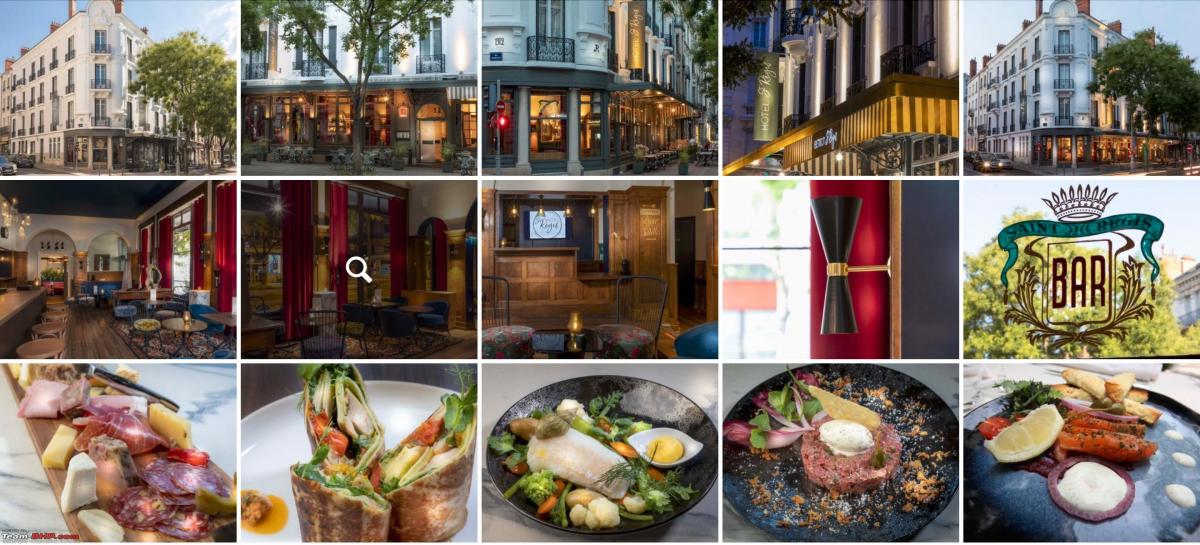
Per person, one room each and breakfast we paid about Euro 115 pp (INR 9450) which for this kind of hotel at this sort of location is a very decent and going rate in most of Western Europe.
We had a quick shower and met up at the hotel terrace. We always like to have a few cold drinks after such a long drive. We felt really tired, the menu looked quite good so we decided to have dinner here too. We were just too pooped out to look for a different restaurant. Turned out the food in the hotel restaurant was very good. We really enjoyed it. Very amicable and knowledgeable staff. We do speak a few words of French, Peter a few more than me. But these days, many French will manage in English. But they always appreciate foreigners trying to speak French. Of course, in these sorts of rural provincial towns, the menu card will always be in French only. Bring your phone so you can use Google Translate. You don’t want to be confusing snails for steak! (I love French snails!) Afterwards, we went for a little stroll and turned in at about 10.30 pm.
The next morning breakfast was at 07.30. In the breakfast room, we were approached by three young Dutch ladies. They had been sitting across from us in the restaurant the night before. They wanted to know if we were the guys that were driving those “old red and green cars”. Yes, so we confirmed. It appears they had been following the same route as us. We had overtaken them multiple times during the day. That happens when you stop frequently. You tend to find yourself overtaking the same cars after a while. We also overtook a gorgeous Dutch Citroen DS several times that day. The three young ladies were on a road trip themselves heading for Spain and Portugal. Their first stop was going to be Barcelona. Nice and interesting town, but I would avoid all of Spain’s main cities in the summer. It gets awfully hot and dusty.
As always, Peter and I bring our TomTom and phones to breakfast. Breakfast is where we plan for the day. Again, some different alternatives. Irrespective it would be about 500 km driving.
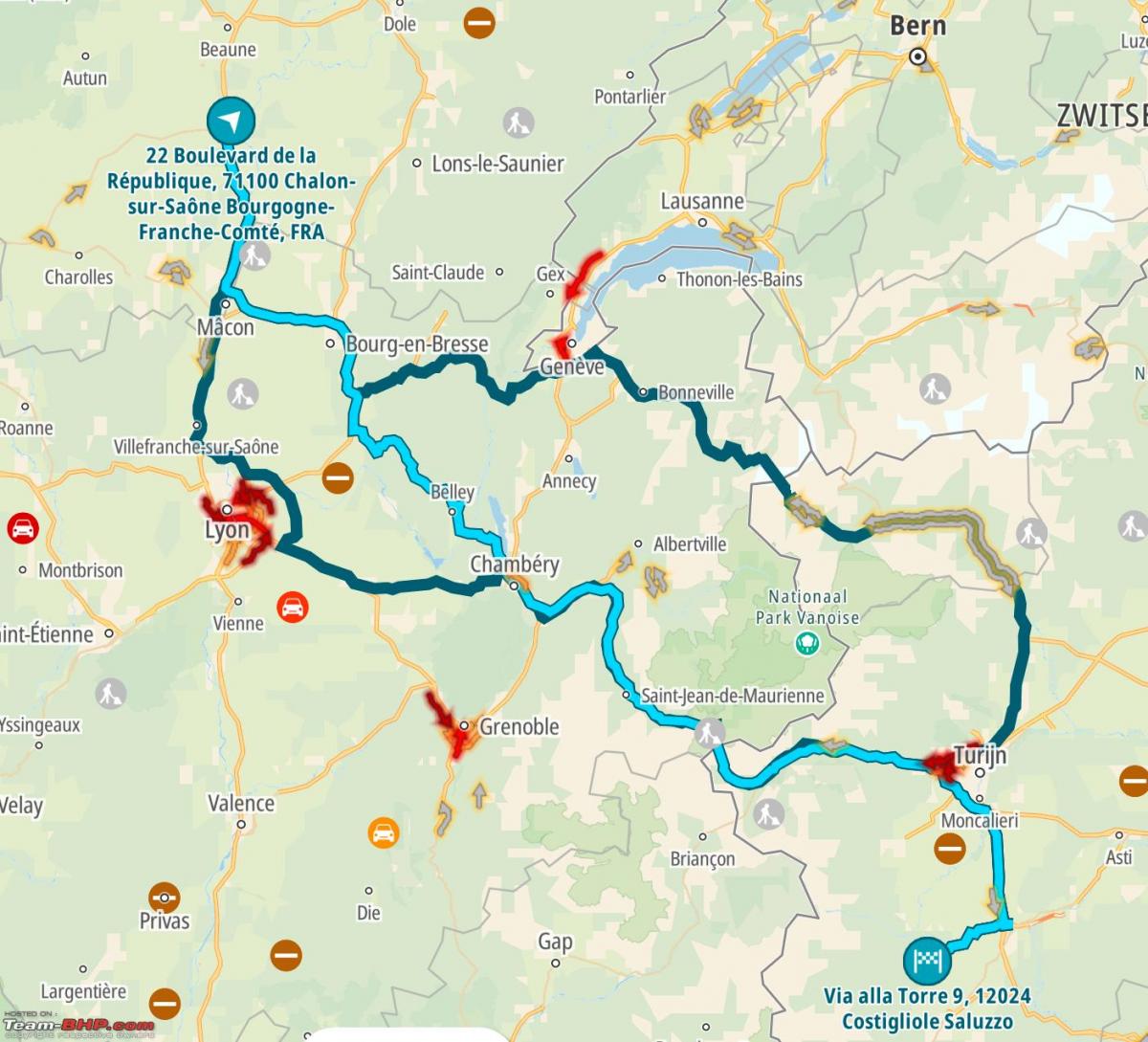
By about 08.15 we hit the road again. Well, not without Peter’s Spider not wanting to start. We had discussed the potential problem the night before. We could not figure out what was wrong. On our earlier trip, Peter had problems starting too. But he had a new starter motor installed. redid some wiring. Also added a relais. On the Spider the starter motor is wired/operated directly via the ignition key. Over time the electrical contacts in the ignition barrel wear out, get corroded and you might experience starting problems. Typically it gets worse in warm/hot conditions. Adding a relais to relieve the ignition barrel of high currents is a well-known simple modification you will find on many Spiders.
With the bonnet open, Peter turned the ignition key, nothing happened, but I could hear the newly installed relais click. Which almost certainly meant the problem was in the new starter motor. With Peter starting I hit the Bendix of the starter motor and it fired up right away. From here on this would be our starting ritual several times a day. Peter would get in, release the bonnet, I would open the bonnet, Peter would hand me a hammer and I would gently tap the Bendix. It only required a very very gentle tap with the wooden stock of the hammer, and it would fire up. So it looks like this brand new starter motor has a problem!! It happens.
Our second day of driving was very similar to the first. Although the roads, or rather the scenery became much prettier. As you might have noticed in some earlier images, traffic on the French motorways was very little. The further south we got, the less traffic. Sometimes we found ourselves barreling south with no other cars or trucks anywhere near us.
A word of caution though for those of you who like to experience the French (toll) motorway roads themselves. There is this French tradition called “Black Saturday”.
It's basically where all French go out en mass and kill themselves and each other.
The French all take their summer holiday at the exact same time. All of France, all the French!! On that Saturday they all pile into their cars and head for their summer destination killing themselves and each other along the way. So whatever you do, avoid Black Saturday at all costs!! It is simply not worth the aggravation. Let alone getting yourself killed by a worked-up Frenchman. You will find yourself in monumental delays. Mile after mile of congestion on all motorways. Endless queues at the toll booth and petrol stations and toilets! Kids crying, tempers flaring! Not much fun!! Don’t do it!!
But no or very little traffic for us. We made excellent progress. Going through the Frejus tunnel was an experience too.
Apart from the huge cost, it is very very long. About 13 km. The road leading up to the tunnel appears to be just a sort of provincial road, with gorgeous scenery and a winding road. Makes for great driving. You find yourself driving towards the Alps, with big mountains with snow on top-up ahead of you!
Some of you might recall the horrendous Mount Blanc Tunnel accident in 1999. 39 people perished! Since a lot of safety precautions have been put in place. You need to ensure keeping 150 meters of distance between cars. To help you they have installed these little blue lights on the walls of the tunnel. They are set 150m apart.
I don't do well in these very long tunnels anymore. So Peter would drive up ahead and I would follow him, at the proper distance of course. Following his rear lights and in the middle I can see his TomTom screen glaring too. A good reference!
We made it to our final destination: Hotel Castello Rosso, located about 30 km south of Turin.
Spiders parked, about 1300 km done in the last two days. With only minor starting problems on one Spider which could be solved easily by whacking the Bendix every time the engine needed starting. Hoods up, Spiders parked for the night.
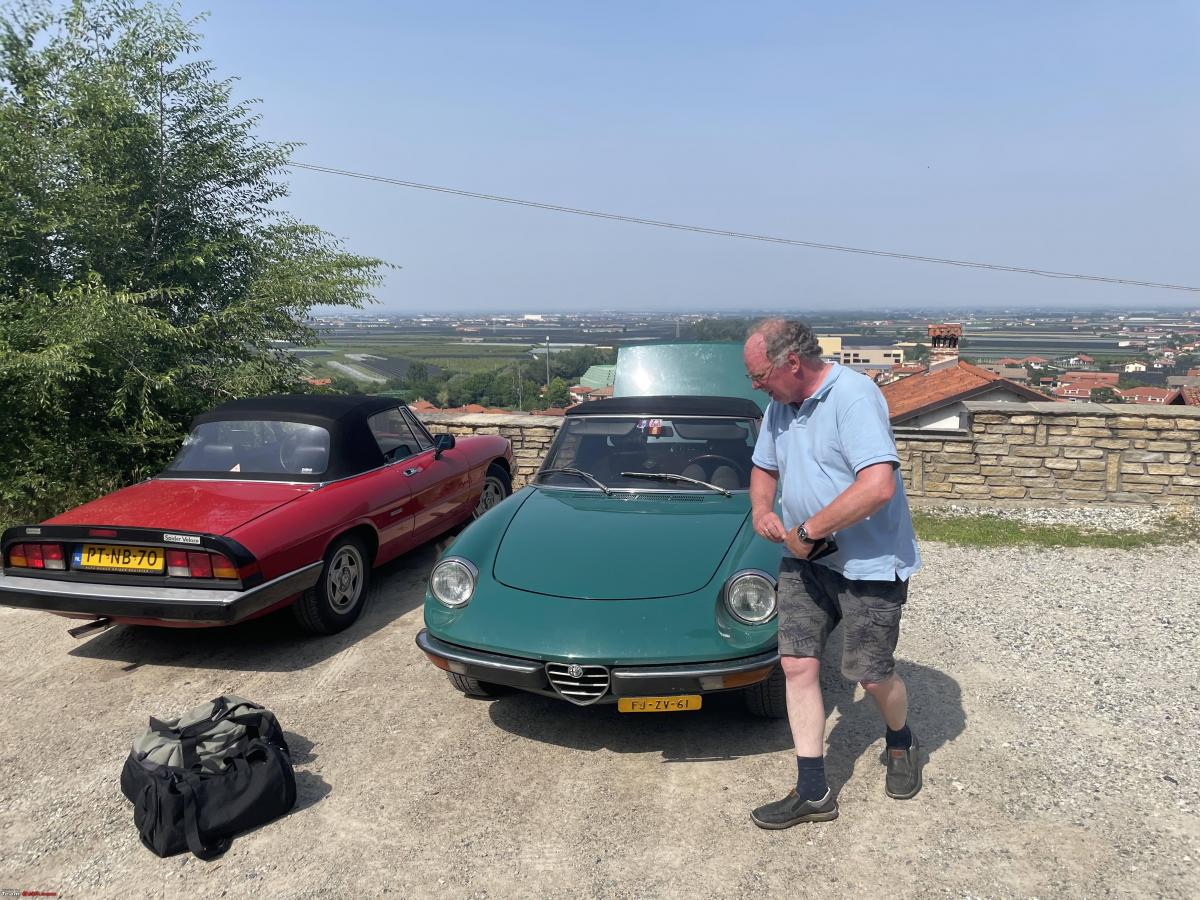

Time to explore this gorgeous place.
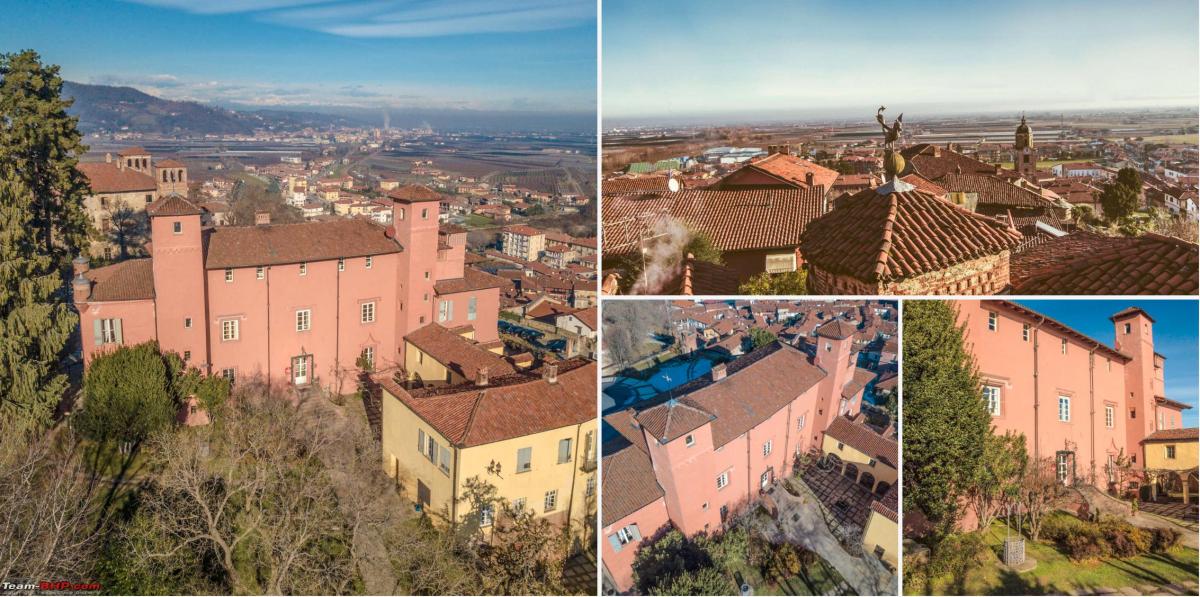
And look at the temperature, still hot even during the evening:

This was also the first time we met the other participants in tomorrow’s challenge. A very international crowd. People travel from far to participate. We had one Swedish guy, Goran, who had driven all the way from Sweden. He spent 17 hours behind the wheel on Thursday. There were quite a few British, Belgium, German and also Dutch participants.
The classic car scene is relatively small. We have been around it for a long time. Peter being a professional classic car valuator knows an awful lot of people, he also recognised some of the cars he had valued some years ago. All for different owners at the time. So whilst we were chatting with the other owners, we quickly discovered mutual acquaintances. There were two guys in a beautiful, stunning yellow Alfa Romeo Spider Coda Tronca. We were talking to them. One of them asked Peter if he knew his wife? Which seemed a bit of an odd question at first. But he had shown his wife the list of participants and she had recognised Peter from his surname. Turns out she went to primary school with Peter many many years ago. Peter was shown an image of him and her in a class photograph aged 8 or 10 or so! Small world indeed.
A lot of talk about cars, of course, fixing cars, repairing cars, finding parts, insuring cars etc. It also became apparent that a number of the participants had been on this 12in12 before. Some bring specially prepared cars and try to improve on their previous time. All in all quite an interesting lineup of classic cars:
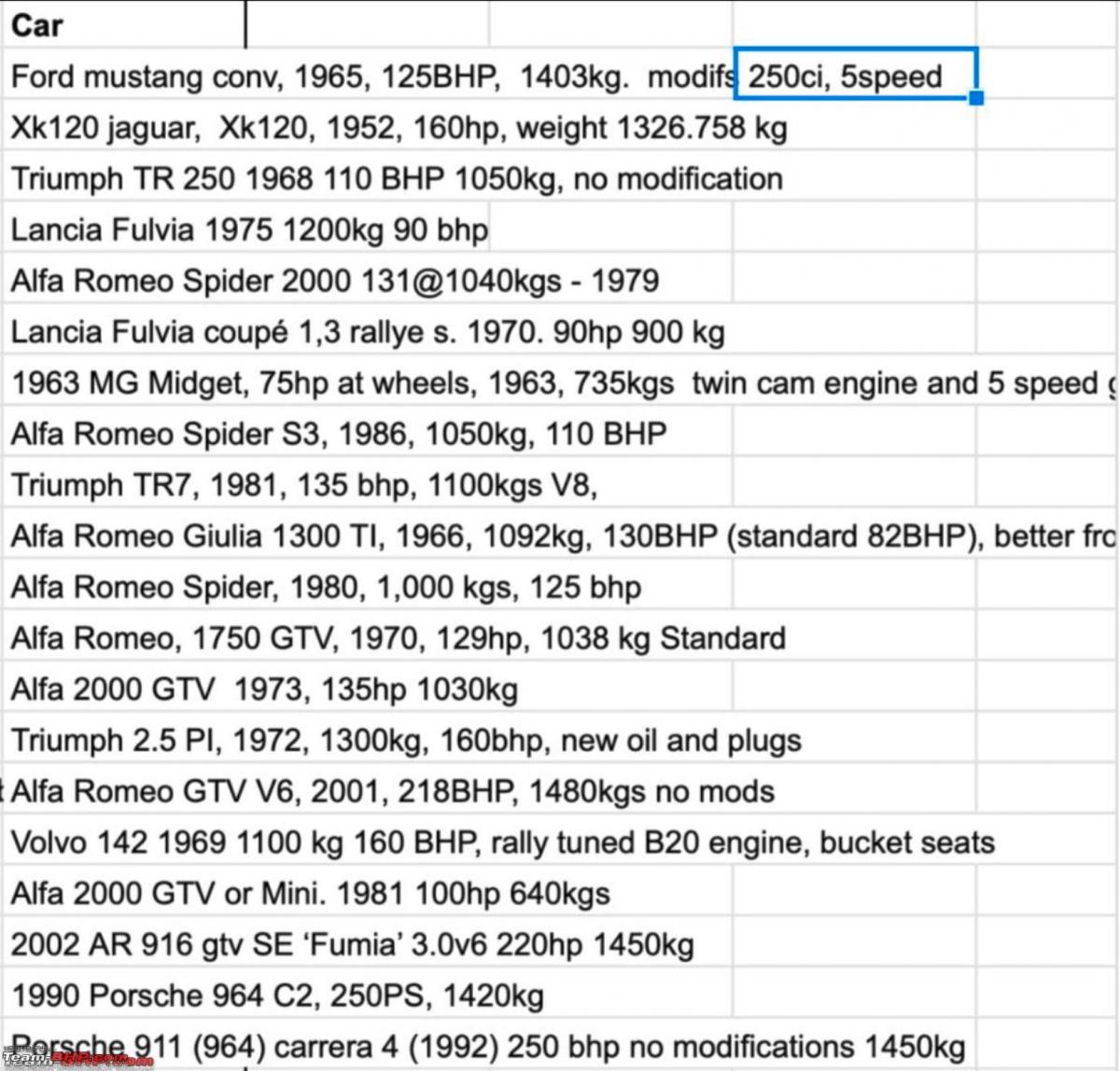
Continue reading Jeroen's road trip experience for BHPian comments, insights and more information.
- Tags:
- Indian
- Alfa Romeo
- Classic cars
News
Three classic Alfa Spiders make it to the North Pole
The trip from Oslo up north and back again to Oslo would be five days. Travelling to and from Oslo would take 2 days each way. So a nine day trip in all.
BHPian Jeroen recently shared this with other enthusiasts.
Over the years you might have seen me mentioning a trip I made to the North pole, during wintertime early 2006. I have never published the full story here at TeamBHP. My good friend Bart who was one of my companions on this trip, was sorting out some stuff in his office over the weekend. He came across a CD with some 140 of the original photographs, taking by professional photographer Henk van de Hurk. At the time Henk was working for the Dutch Car Magazine Autovisie.
Whenever I am reminded of this fabulous trip I can’t stop thinking or talking about it. So with a lot of photographs recovered and some of my own images, I decided it is high time to pen down the full story. So here goes:
HOW IT ALL BEGAN
I recall one evening or afternoon I was reading the latest issue of the Dutch Car Magazine Autovisie. Its chief editor, Ton Roks, always wrote a great editorial column. This time he was fantasising about doing something with a few readers that had not been done before. Like taking some cabrio cars to the north pole in the winter!!
I immediately phoned my good friend and spanner mate Peter. Peter had read the article to and we decided to apply immediately. So we wrote an email to Ton, introducing ourselves. We also suggested that he should consider “upping” the challenge a bit. We pointed out to him, that modern cabrio’s are extremely luxurious these days. With virtually no wind blasting around the cockpit, warm air duct coming from the head rest to keep you neck warm, proper heating, electrical heated front windows. We suggested to Ton that real men would take a proper classic rag top car to the North pole, top down obviously, all the way. Anything else is just for whimps.
Ton replied immediately, he wanted to take us up on our offer. So Peter and I started thinking about preparing for this event. We still had some 4-5 months to get ready. At our next Alfa Romeo Spider Register event we mentioned it to some of our Spider friends. Only to find out that two others had registered as well. Bart and his brother in law Richard were going in Barts' British Racing Green Series 4. And Ed was taking his red Coda Tronca together with an old mate of his, Hans.
So there would be at least three classic Alfa Spider going north!
Peter and I were discussing which Spider to take. He and I both had a series 3, but Peter also had a gorgeous Serie 2, green Coda Tronca. Initially we were going to take Peter’s white Series 3. I can’t remember why but we had to change and take his Coda Tronca in the end. I think there was something wrong with the Series 3 and we did not feel comfortabel taking it on such a long drive. Something with the fuel pump. So we opted for the Coda Tronca.
Autovisie was in charge of the overal organisation, the route, fuel stops and the hotels. They also arranged for proper winter spike tyres for all the cars. However, there was a catch; We had to get to Oslo, Norway, ourselves. That is where all the cars and crews would meet up and set off on our pole adventure. Our spike tyres would be fitted in Oslo too. Autovisie would send a crew of three. One of their journalist, Werner, their staff photographer (Henk) and Hetty, the lady in charge who organised these sort of events all the time. They had arranged for some sponsorship as well and were also given some support vehicles.
We would have to pay for our fuel, food and accommodation ourselves. The trip from Oslo up north and back again to Oslo would be five days. Travelling to and from Oslo would take 2 days each way. So a nine day trip in all.
We decided to pool our resources and knowledge amongst the three Spider crews to get ready.
GETTING READY
We had several areas of attention:
1) Prepare the cars to survive severe winter conditions
2) Get kitted out for us to survive severe winter conditions
3) Find Sponsors, get stickers made for our cars and arrange for lots of PR
4) Decide how we would get to/from Oslo
Ed, Bart, Peter and I had all been active in the Spider Register in various capacities. So we knew a lot of people and a lot of companies that we could approach for sponsor ship and other support.
Getting the cars prepped was actually pretty straight forward. Bart was friendly with a nearby car dealer. The owner was quite happy to lend us his garage and equipment for a day. So we all drove up there. Peter and I checked every Spider out. All of them were very well maintained to start with. In the end we only replaced the coolant fluid with very low temperature coolant. That was the Spiders prepared.
Bart also had contacts with one of the large Outdoor-chains in the Netherlands. They supported us in helping to choose the right clothes and we got substantial discounts from them. I remember we all went to one of their shops on a Saturday morning. There was this very knowledgeable sales person who provided us with all the insights into how to dress up for the north pole. The most important lesson; No cotton, whatever you wear, no cotton, never ever! Ever!
Keeping warm is all about layering. So we bought ourselves a multitude of layers, made of these very special wools and final layer of clothing with a windbreaker filled with feathers!
I had to model all our layers for a photoshoot we did for our sponsor:


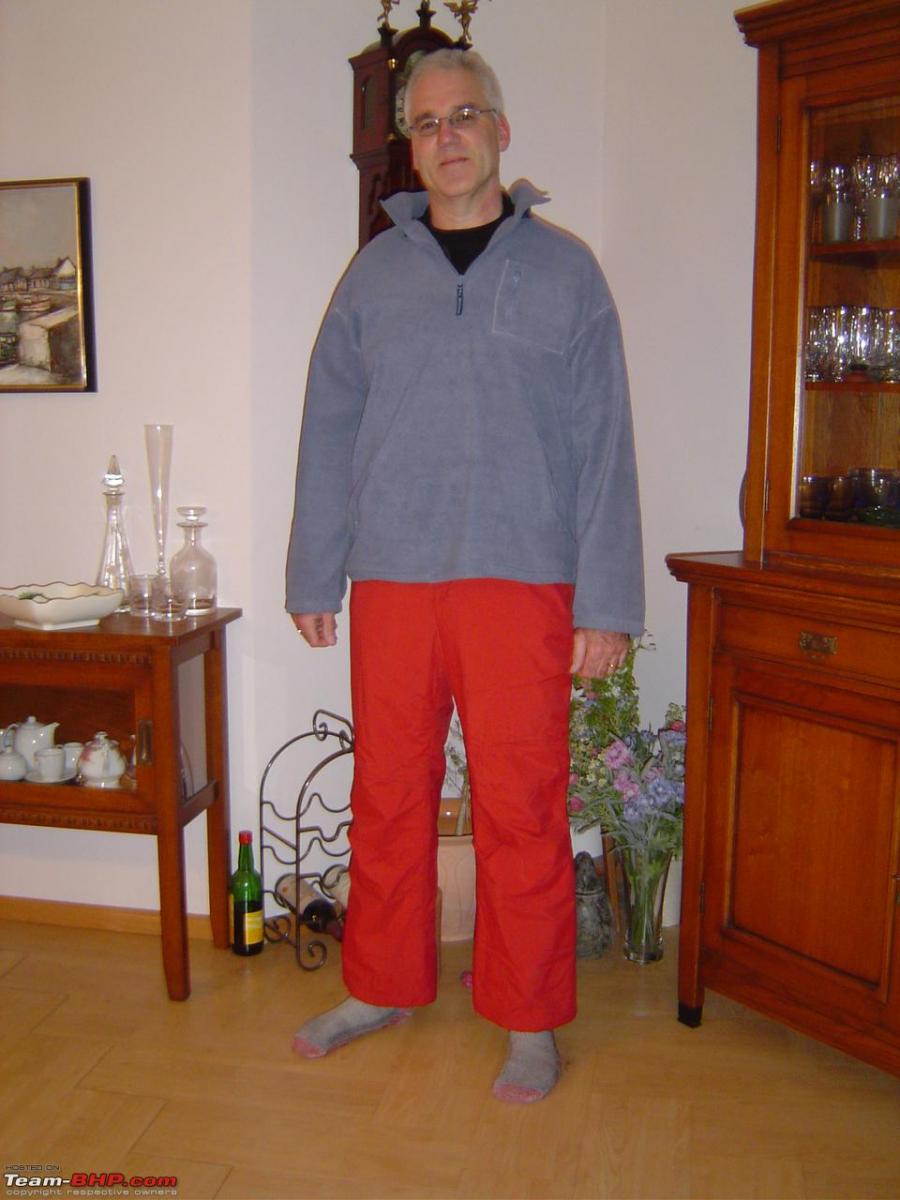
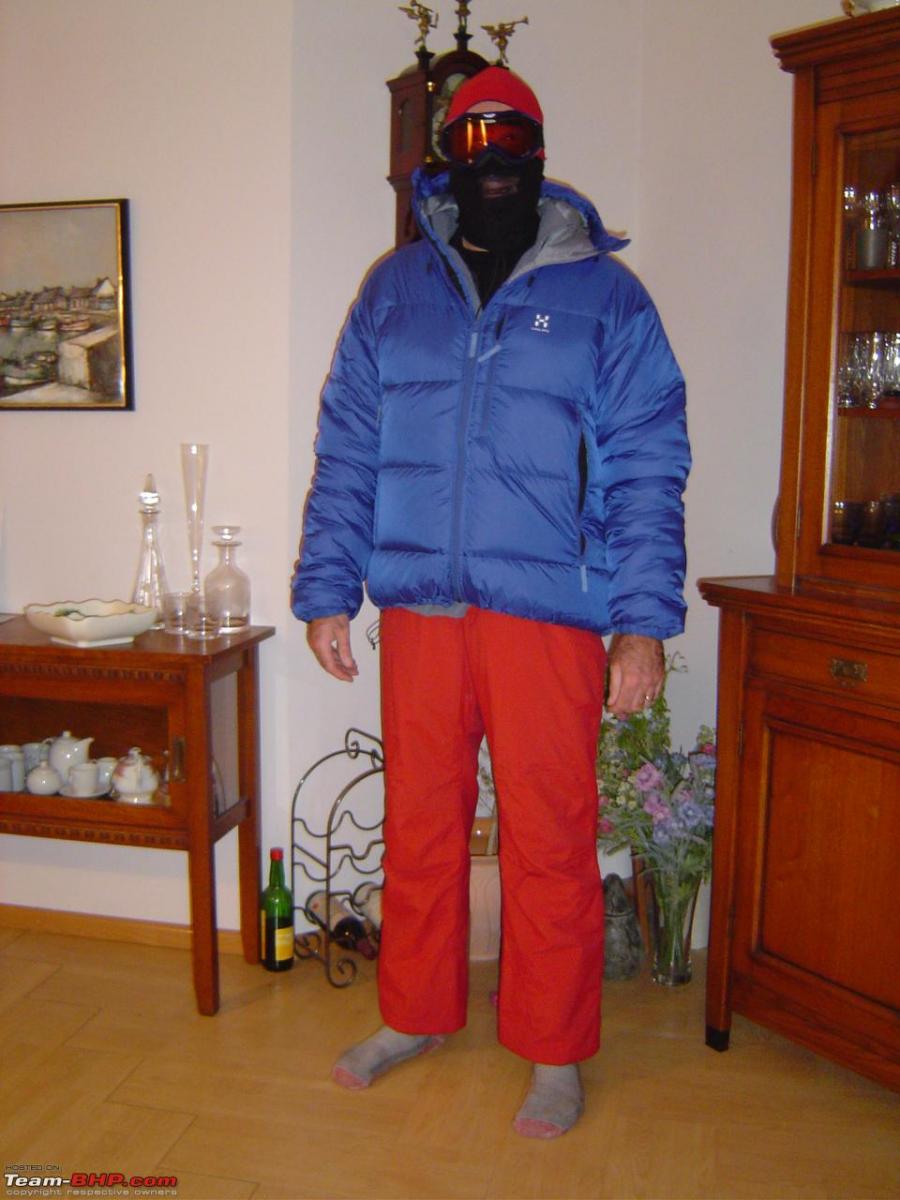
All of us called everybody we knew to try and get some sponsorship from them. In return we would put stickers with their company logo on all three Spiders and mention them on our Blog and in our Alfa Romeo Spider Register Magazine. And of course all the photographs in the Autovisie magazine would show the logo’s too.
We all managed to get quite a few parties interested. In particular Ed was very good at securing sponsorship. In the end, the whole trip cost us hardly any money at all!
We also ensured some additional PR. We all featured in various local magazines and radio shows. Not everybody got it why we were going to drive to the North Pole in the winter top down. I remember one Saturday afternoon. We had American friends staying with us, Ann and Tom. I had been talking to them about our upcoming trip. Ann was flabbergasted. That afternoon Peter and I were going to meet a local journalist for an article. So Peter rocks up in this Spider in front of our home. Ann spots him and calls out: “The other idiot has arrived”
Here an example of one of those local articles: All in Dutch I’m afraid.
the article is called: Met open dak naar de pool, which translate as “to the North pole roof down!"
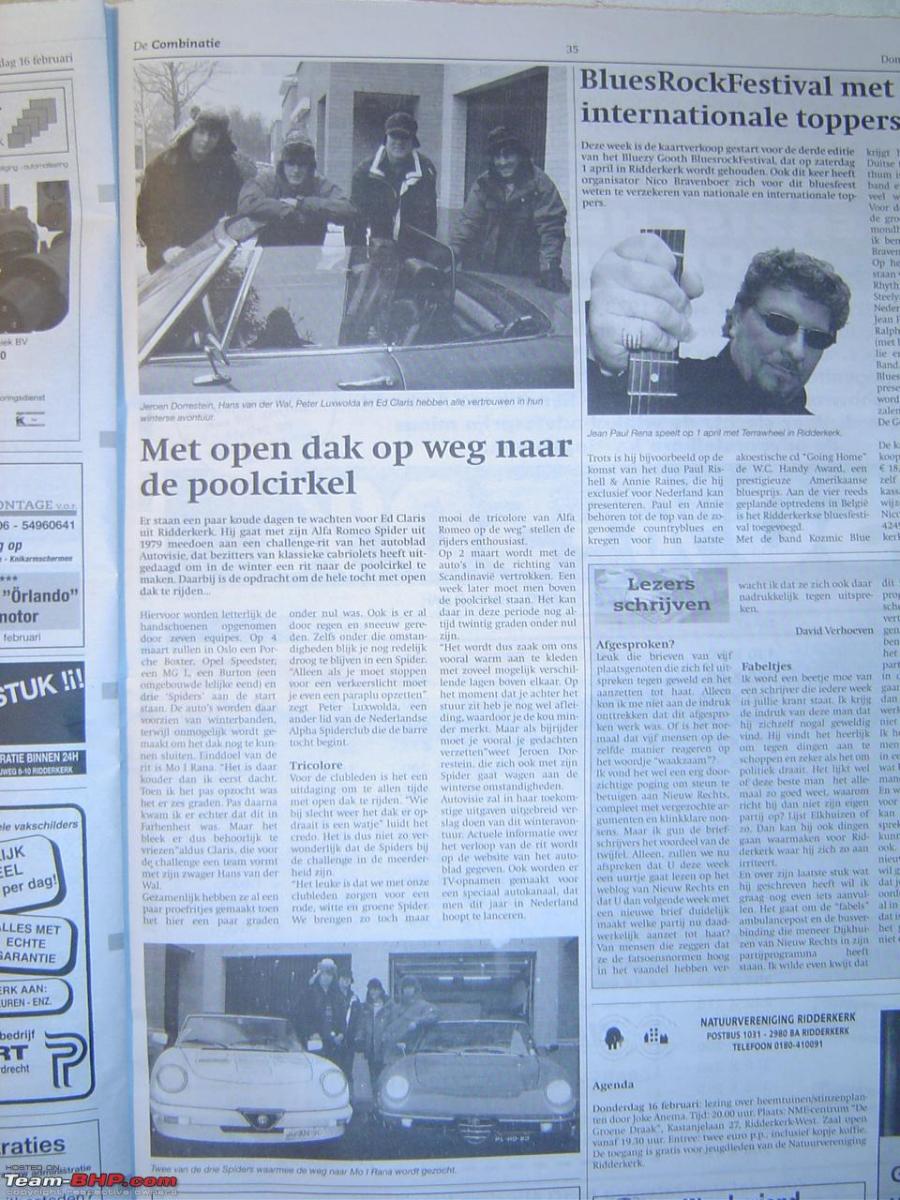
Note: this image still shows Peter’s white Serie 3. We had it all prepared, sponsor stickers and all, but in the end we had to take his green Coda Tronca.
There are several ways of getting from the Netherlands to Oslo. We decided to go via Germany, take the ferry from Germany to Sweden. And then follow the Swedish west coast all the way into Norway and ultimately into Oslo.
The ferry crossing would make for a good break and none of us had ever taken this particular crossing yet. So something new for all of us.
By early January everything was ready. Cars were ready, we had our polar kit, our Spiders were covered in Sponsor stickers. Autovise had given the final confirmation and final instruction on when and where to meet in Oslo.
So time to get going!!
GETTING TO OSLO
All of us lived in different parts of the Netherlands. So we had decided to meet up in the centre near Utrecht at one of the petrol pumps on the Motorway.
I was going to drive to Peter who lived in Amsterdam, park my car and leave it in front of his house and jump into his Spider. Of course, this being winter we were not expecting great weather. What we had not counted on was one of the most severe winter day in the Netherlands for decades! Just our luck. I had difficulties just making it to Amsterdam where Peter lived. We had not even started our North Pole adventure and we were already running behind schedule.
There was massive snow fall, which is rare for the Netherlands. Subsequently all traffic is severely impacted, endless queues, accidents, roads being closed down etc. I honestly think we were the very last car leaving Amsterdam that day. Traffic in and out of Amsterdam got completely bogged down.
We met with the two other Spider Crews about an hour later and we decided to push on to the ferry in German as fast as the snowy road would allow us. Even though the weather was pretty horrendous, we did make it to our ferry on time.
By the time we reached the ferry we had left the snow behind.
Here you see us driving onto the ferry:
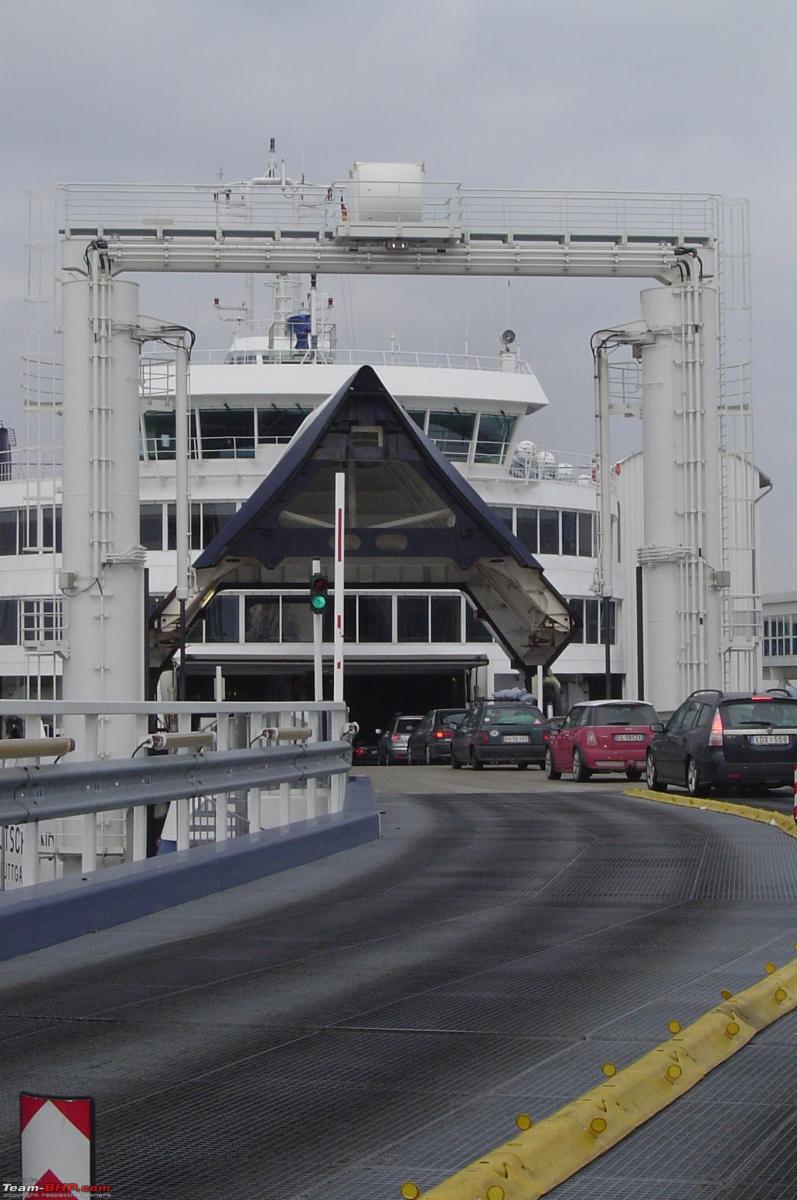
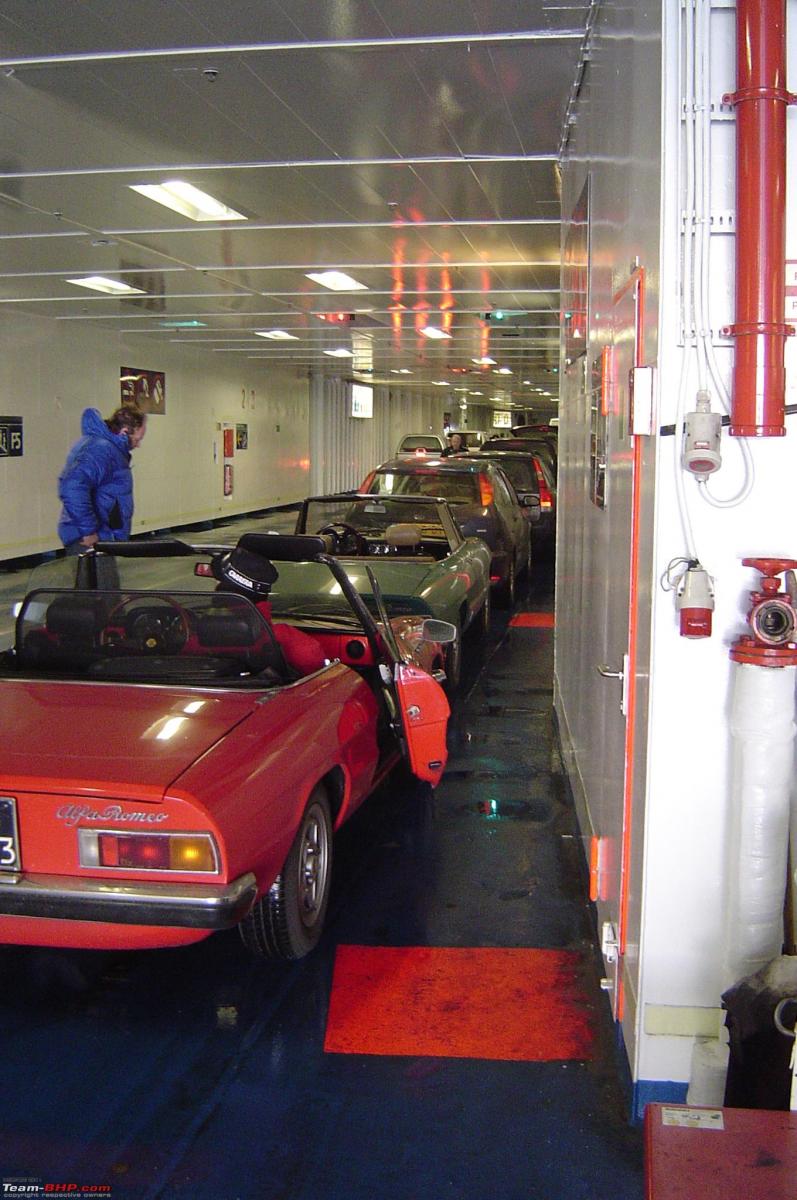
Had a nice crossing. Had some proper (warm) food, stretched our legs a bit. And then when we drove into Sweden the weather was even worse. With about 50 centimeter of snow everywhere. Now remember, we are driving on average forty year old classic rag top cars, top down, rear wheel drive, on regular tyres! Not a very good, or safe combination. Luckily the Swedes are far better equipped to handles heavy snow fall than the Dutch. 50 cm of snow won’t get them to even blink!
This is what life on the Swedish motorways in January looks like.

We knew our Spiders are relatively low and small cars. But low and small gets a whole new meaning when you find yourself driving next to one of these Behemoths.
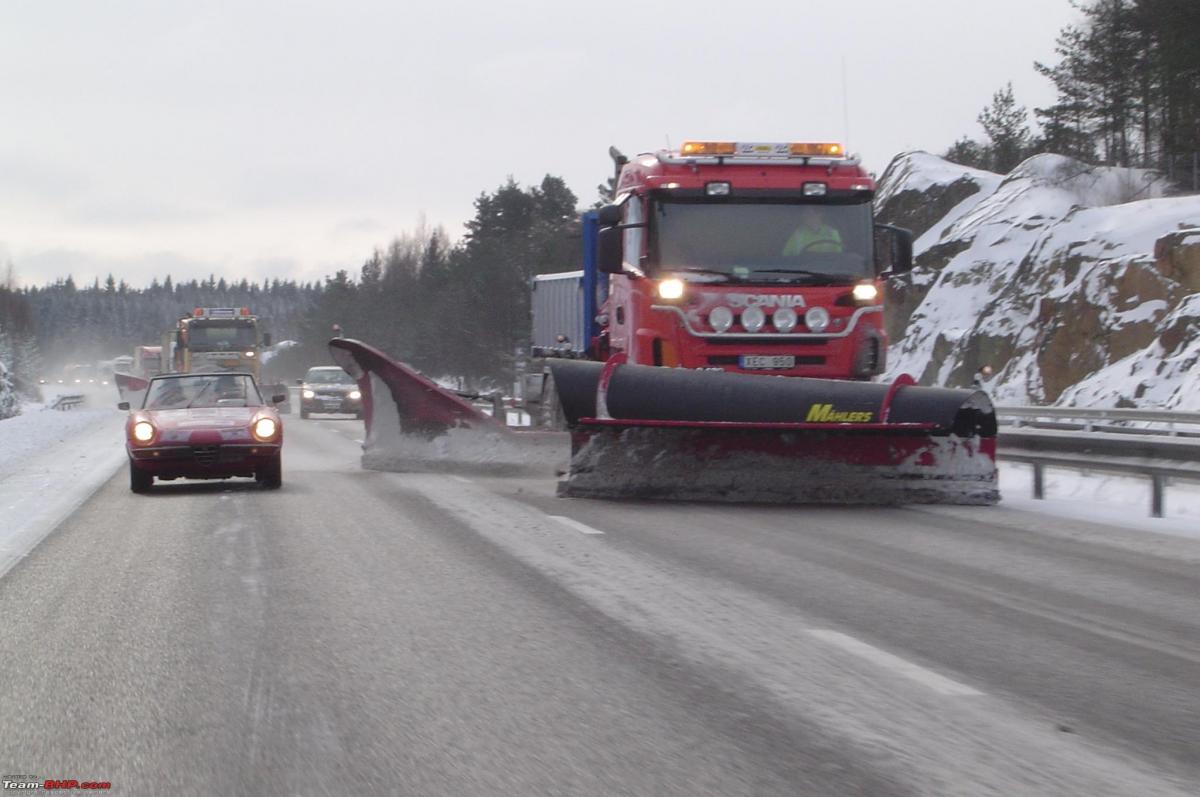
Made it to our first hotel that evening.
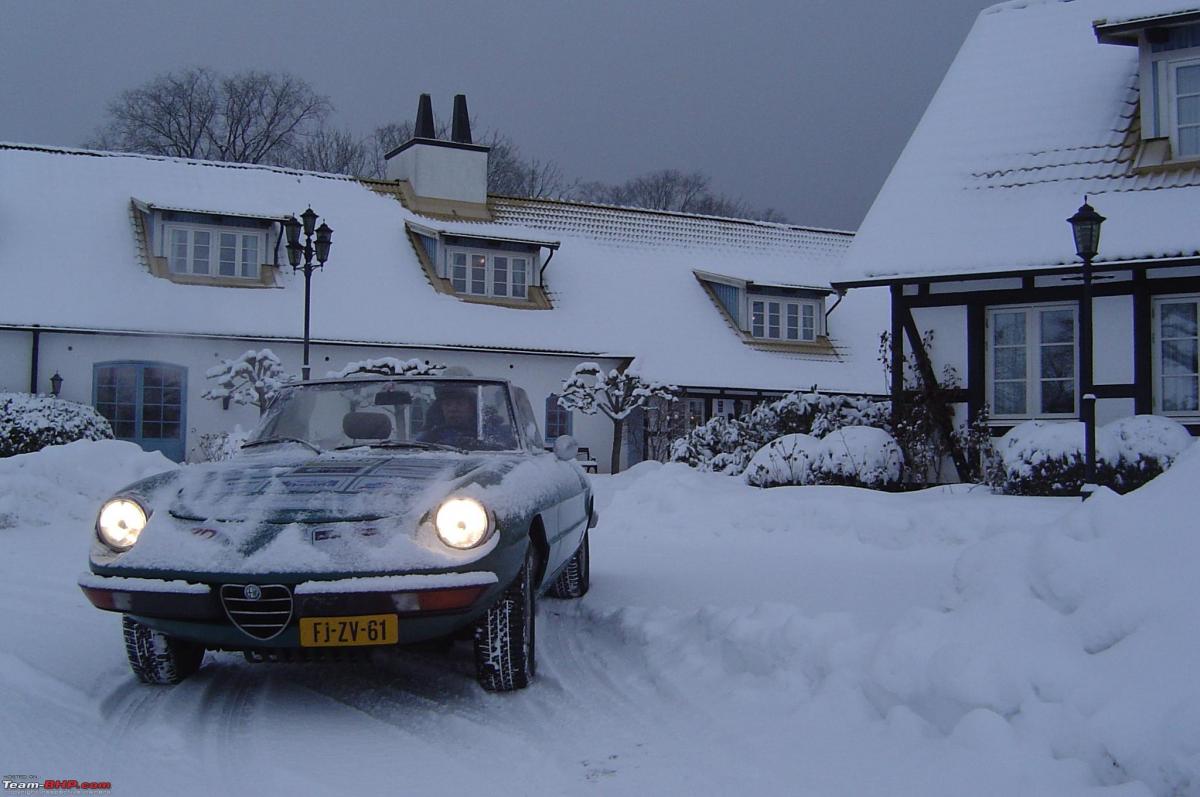
The next morning we got up early only to find our Spiders and the hotel parking place covered in heavy snow. Took us a while to clear the snow and with the help of several other guests and staff we managed to push the Spider onto the road.
Driving to Oslo via Sweden meant we were sticking to the Motorways. Because we just did not have the time to divert into pretty Swedish rural road. Also, our spike tyres were in Oslo and we were pretty desperate to get those fitted.
It was also the first day all of us used all our polar gear. Which is great in keeping you warm. However, stopping to have a quick pee is just not possible. You have to peel off all these layers! We stopped a couple of times for fuel. I remember at one of these fuel stops I walked into the shop to pay; The guy behind the counter looked me up and down and said: What on earth are you guys doing? So I told him the whole story. He looked at me and said: Why? I explained again, and again his reply was: “but Why?” So we just thanked him and moved on.
Made it to our hotel in Oslo where we met the Autovisie crew and the other members of our party. Apart from the three Spiders there was a VW Beetle, a MGF and a Porsche Boxter. Also, Autovisie had arranged for themselves a Cabrio Saab 9-3 for themselves. As well as another regular Saab, as a support vehicle.
The next day after a healthy breakfast we were instructed to drive to a nearby tyre fitter where our Spikes would be fitted. However, there was problem with the Saab. The roof would not open. On this car it is electric and nothing happened. So we stopped at a Saab dealer first and asked them to check it out. They told us that below 4oC the roof can not be opened!. They could by-pass this limit, but that meant the roof could not be closed again. So had to be left open. So the Autovisie crew decided to have the roof permanently open.
I can’t remember all the details, but I believe Autovisie had arranged for Lease Deal to sponsor our Polar tour. So all the cars got some more sponsor stickers fitted;

Finally, spikes fitted!
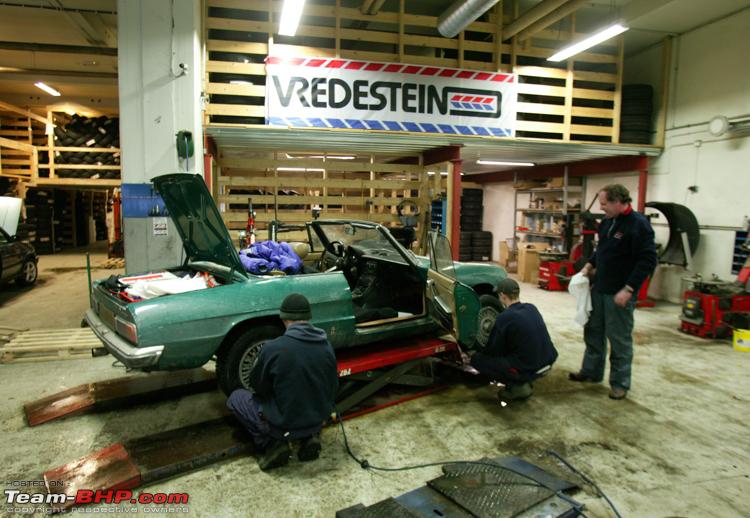
The spikes make a huge difference. If you have never experienced them, it is difficult to imagine. But you find yourself driving over snow as if there is no snow! They did worn us not to get too enthusiastic. Sometimes the snow covers what they call black ice. Spikes are no spikes, won’t make the slightest difference when you hit black ice. You will spin out of control no matter what.
With all cars now equipped with proper polar spiked tyres we set off and headed north!!
HEADING NORTH
Checking our the route in our tour book.
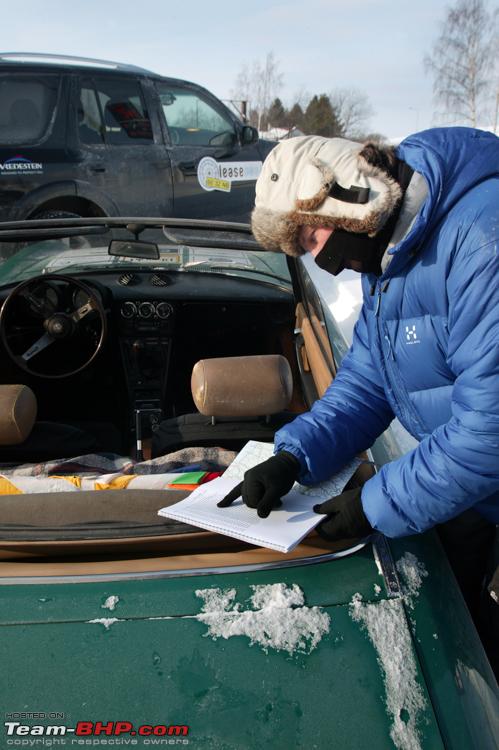
Bart en Richard in full Polar gear
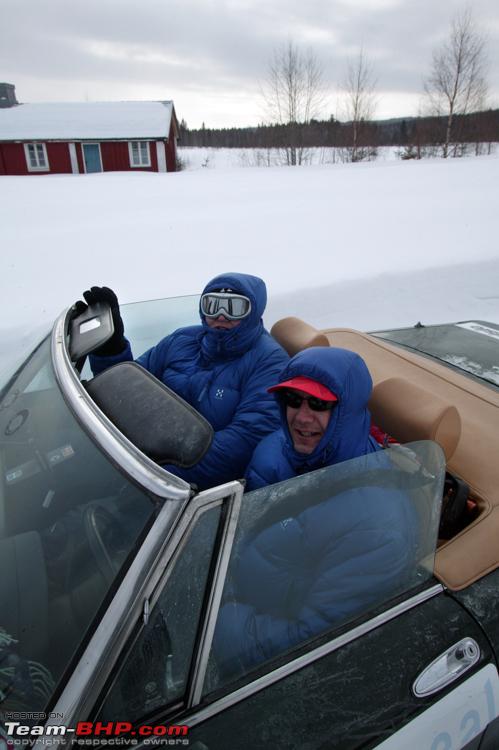
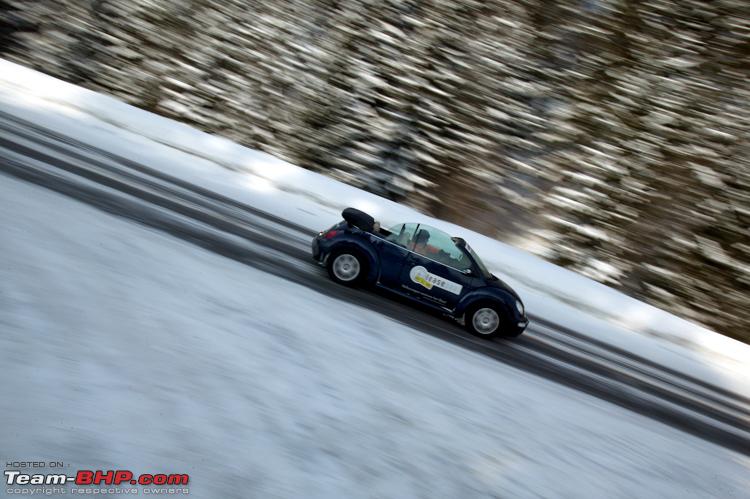
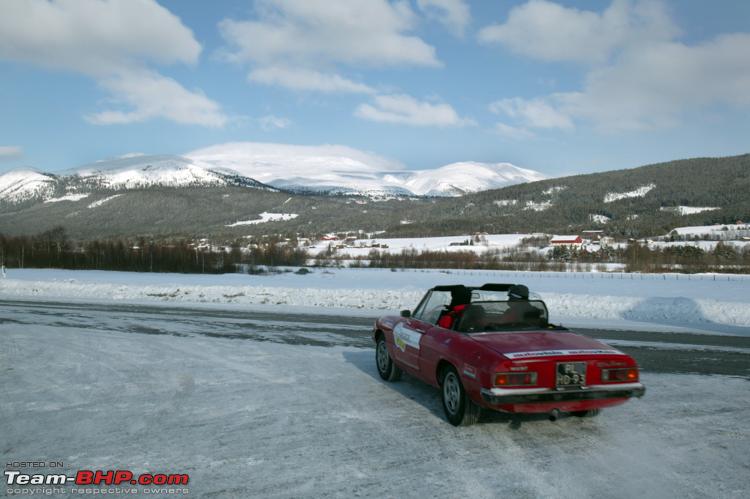
We did have regular stops along the way. Sometimes for coffee, a leg stretcher, just to admire the scenery, or to talk through the route.

You will have noticed the weather had improved dramatically. As bad as it was getting to Oslo, it would remain sunny for the next five days. Cold, very cold, but sunny! Can’t ask for any better in January in the North of Norway!
The MGF:
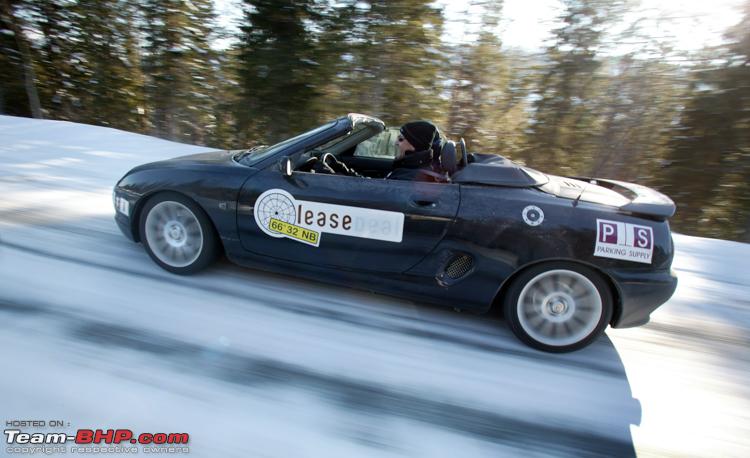
I was sitting next to the Autovisie crew when the MGF arrived at our hotel that first evening in Oslo. I heard them murmur amongst themselves; Oh my God, a flipping MGF. I hope they have good insurance!
The MGF might have been marketed as a perfectly balanced mid engine sports car. But on snow it was absolutely lethal. These guys went of the road multiple times, just in the first hour after leaving Oslo. And they did have spike tyres fitted too.
This would become a very customary sight during the next five days: The MGF stuck in a pile of snow.
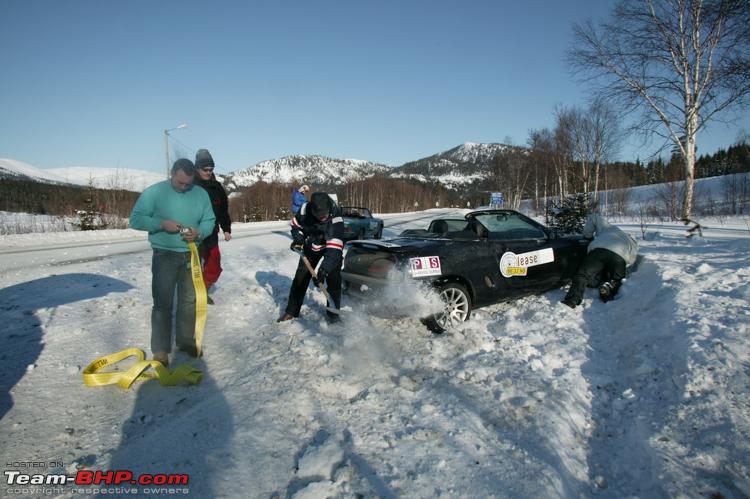
People and Saab to the rescue
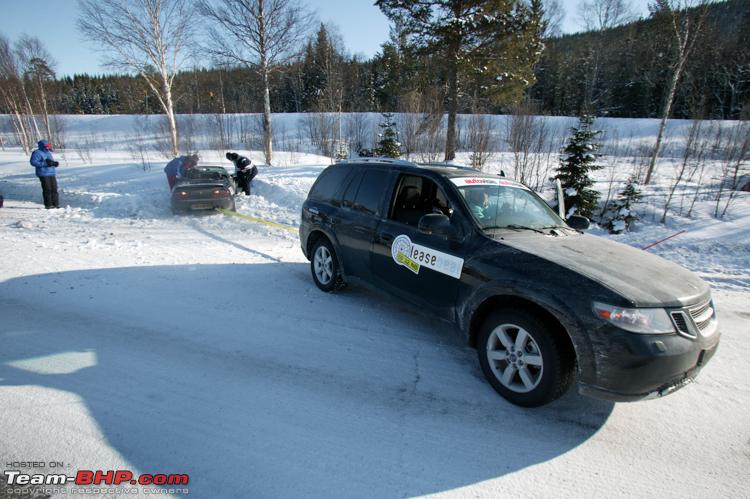

At one point, these guys got pulled over by the cops. The cops had been driving behind them and they saw this MGF slithering and sliding all over the place. The driver had to take a breathalyser test! Took a bit of convincing the cops that he was not drunk, it is just how these cars drive on snow!!
Another hardy polar expedition member

Every day we would be setting off by about 08.30 and drive till around 17.00 / 18.00. Which meant setting off by the time the sun came up and usually stopping by the time the sun had already gone down.
At the end of each day, in a warm hotel Peter and I would dig up the local internet cable and publish a blog update. The Alfa Romeo Spider Register Webmaster Henri was very supportive of our tour and made a special section on our Spider Register website where we could publish our daily progress. It drove the Autovisie crew bonkers. Because even after three days into our tour they had not managed to publish untying on their website.
Bear in mind this was 2006 all the way North in Norway. Internet was not as well established as it is today. All of hotels did have some sort of internet connection, but not necessarily for the guests. So when I mentioned that Peter and I would dig up the internet cable, that is what we literally had to do in a few cases. There would be, literally, a single cable, plugged into the Hotel owners computer or local server. Some of our fellow expedition members were a bit weary of our technical endeavours.
But we told them: “listen up, we are heading for the North Pole, how many people have you seen along the route today? Nobody is going to notice if we hijack the local server for a few minutes.
Yours truly doing something on the internet:
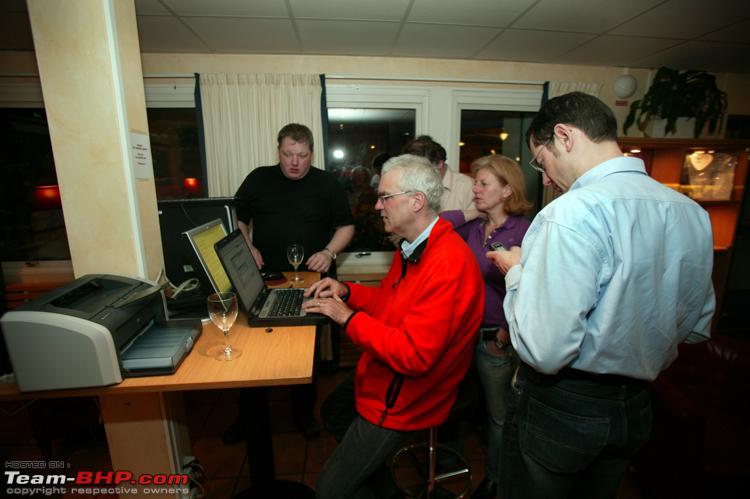
Some more images from those first few days:
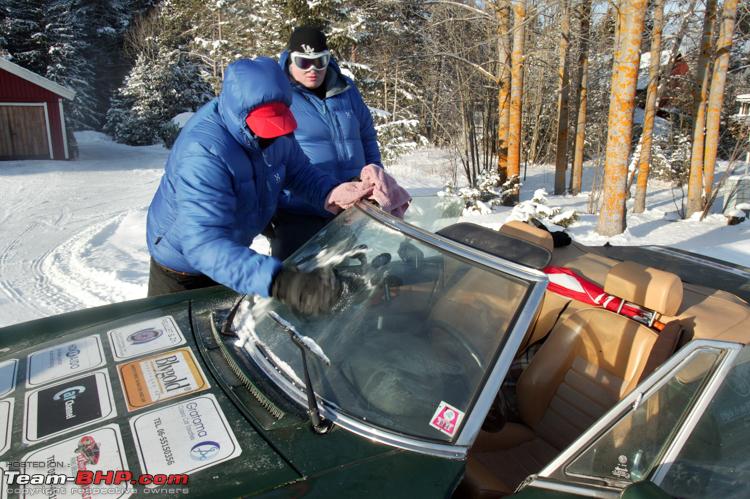



Continue reading BHPian Jeroen's travelogue on his adventures with three Alfa Spiders to North Pole for more insights and information.
- Tags:
- Indian
- Alfa Romeo
News
Rare 1957 Alfa Romeo Giulietta Sprint Veloce Zagato in India
After decades of speculation, we were fortunate to hear first hand accounts of what is probably India’s most special post war sports car, a 1957 Alfa Romeo Giulietta Sprint Veloce Zagato. Just about 16 cars were hand built by Zagato, and their remarkable strike rate in motorsport events spawned the higher volume SZ series.
BHPian karlosdeville recently shared this with other enthusiasts.
For years we have heard, discussed and debated a very special car in the Indian historic car scene. Mostly we just had a couple of hazy photos and stories of a special Alfa that was raced by the legendary Rossi.
One of the very few pictures posted earlier of the car in more recent times. So what is the actual story?

After decades of speculation, we were fortunate to hear first hand accounts of what is probably India’s most special post war sports car, a 1957 Alfa Romeo Giulietta Sprint Veloce Zagato. Just about 16 cars were hand built by Zagato, and their remarkable strike rate in motorsport events spawned the higher volume SZ series.
From my understanding, below is the history of the car, thanks mainly to marque expert Gino Giugno and long term owner Rajesh Malhotra.
The Alfa Romeo Giulietta Sprint Veloce AR*1493E04249, engine no. 1315-30486 was delivered on March 19, 1957 and originally registered Roma 317412. Some months later, it was sent to the Zagato works in Milan to be fitted with a lightweight body upgrading the car to SVZ (as was the case with other cars too). The first owner is recorded as Mario Angioli; and subsequently Silvano Bernabei, Clara Barbato (Dario Sepe, a new registration plate number NA146353), Silvio Mandato and Renato Valli (also Renetto Venneli?).
The car had competed in multiple motorsport events in Europe, some wins are listed below:
- 1958 AGNANO - CAPPELLA CANGIANI, car driven by Dario Sepe.
- 1958 SORRENTO SANT'AGATA, car driven by Dario Sepe.
- 1959 TARGA FLORIO, car no 38 driven by Dario Sepe - Colin Davis.
- 1959 PALERMO - MONTE PELLEGRINO, car no 202 driven by Dario Sepe.
- 1959 COPPA SILA, car driven by Dario Sepe.
- 1959 CATANIA ETNA, car no 312 driven by Dario Sepe.
- 1960 TARGA FLORIO, car no 54 driven by Silvio Mandato - G.Ruggero.
- 1960 TARGA VESVIO, car driven by Silvio Mandato.
The most prestigious of these, was the class win and 6th overall at Targa Florio on May 24th 1959, with Dario Sepe and Colin Davis at wheel. We believe it is the only SVZ to achieve this distinction. Thankfully, this is backed up by authentic documentation from the Automobile Club d’Italia and marque expert Gino Guigno ,who has documented each car built in his books ‘Giulietta Sprint Veloce Zagato’, as well as ‘La Targa Florio della Giulietta’. This is especially important given the high number of fakes in the international market that keep popping up.
Thanks to AlfaBB and Gino for these priceless images.
Continue reading on this special Alfa Romeo for BHPian comments, insights and more information.
News
Barn finds in India: Rare Alfa Romeo Giulia 1600 TI
Images of a rare Alfa Romeo Giulia 1600 TI have been posted in our 'Barn or Garage Finds in India' thread. The car was found in Amravati, Maharastra.
The car, finished in blue, is said to have the original trims. From the outside, it looks intact with most parts still in place. It is also said to have low mileage.
The Guilia 1600 TI was produced between 1962 and 1967. It is powered by a 1,570cc four-cylinder engine producing 90 BHP @ 6,200 rpm. TI refers to "Turismo Internazionale", which is a class of Italian saloon car racing.
Thanks to BHPian Kartik Deshmukh for sharing this with other enthusiasts.
- Tags:
- Indian
- Alfa Romeo
- Giulia
- Barn find
News
Rumour: Alfa Romeo's Stelvio-based hybrid SUV to rival Q7, X5
Alfa Romeo has revealed plans for a large SUV that will rival the likes of BMW X5, Audi Q7 and Volvo XC90. It is also rumoured that the Italian sports car maker will also venture into the electric / hybrid car space for the first time with this car.
According to the rendered images, the new SUV will get a longer wheelbase than the current Stelvio. It is expected to weight around 200 kg more than the Stelvio, but the addition of an e-turbo based mild hybrid system could maintain the same performance for the larger SUV.
Alfa Romeo believes that a plug-in hybrid system may not align with the company's thoughts, but a 48V mild hybrid system could be incorporated into the new SUV. Further, the new car will be based on the Stelvio architecture and make about 350-400 BHP from its 2.0-litre engine.
The new SUV is also expected to get a 7-seat layout and will be launched sometime after two years. The media report also mentions that the Giulietta replacement will follow this X5 rival and the company is also looking at options for the next iteration of the 4C sports car, including new underpinnings and an engine.
Source - AutoExpress
- Tags:
- Indian
- International
- Alfa Romeo
News
Alfa Romeo returns to F1 as title sponsor of Sauber F1 Team
Alfa Romeo and the Sauber F1 Team have entered into a partnership that marks the return of the Italian brand to Formula 1 after an absence of more than 30 years.
From the 2018 season onwards, the team will be called as the Alfa Romeo Sauber F1 Team. The cars will get a new livery incorporating distinctive colours and the Alfa Romeo logo.
Alfa Romeo will be the team’s main title sponsor. The multi-year agreement signed by the two parties includes strategic, commercial and technological cooperation in areas of development and access to the engineering know-how of Alfa Romeo’s technical team.
The Sauber F1 team has had a terrible 2017 season. The team finished last in the World Constructor’s Championship scoring just 5 points. The poor performance can be attributed to the fact that the team was forced to use the 2016 Ferrari power units that were down on performance compared to the latest engines. This is set to change as the Alfa Romeo Sauber F1 team will be using the 2018 Ferrari power units in their cars for the next season.
Pages
- « first
- ‹ previous
- 1
- 2
- 3



